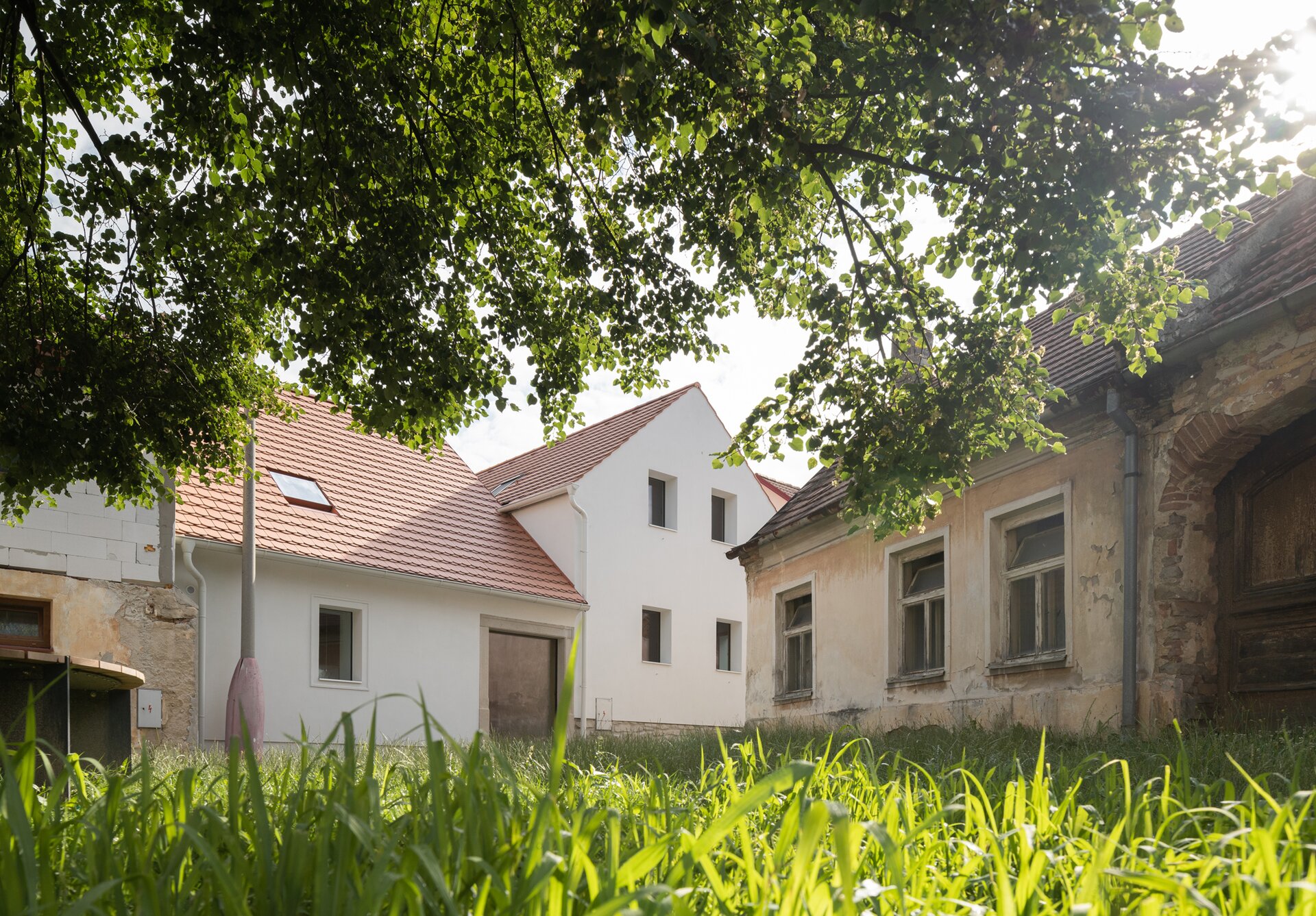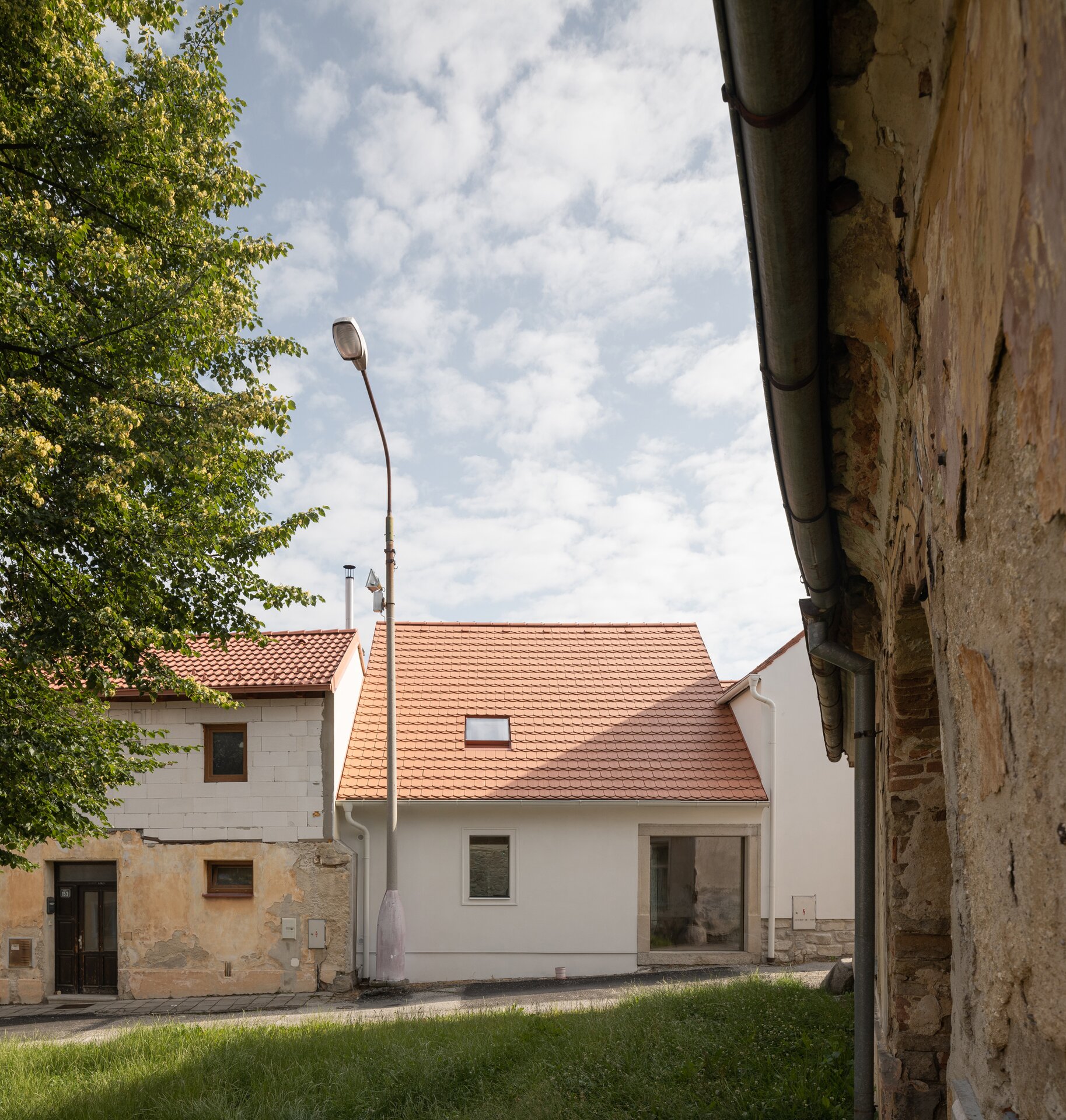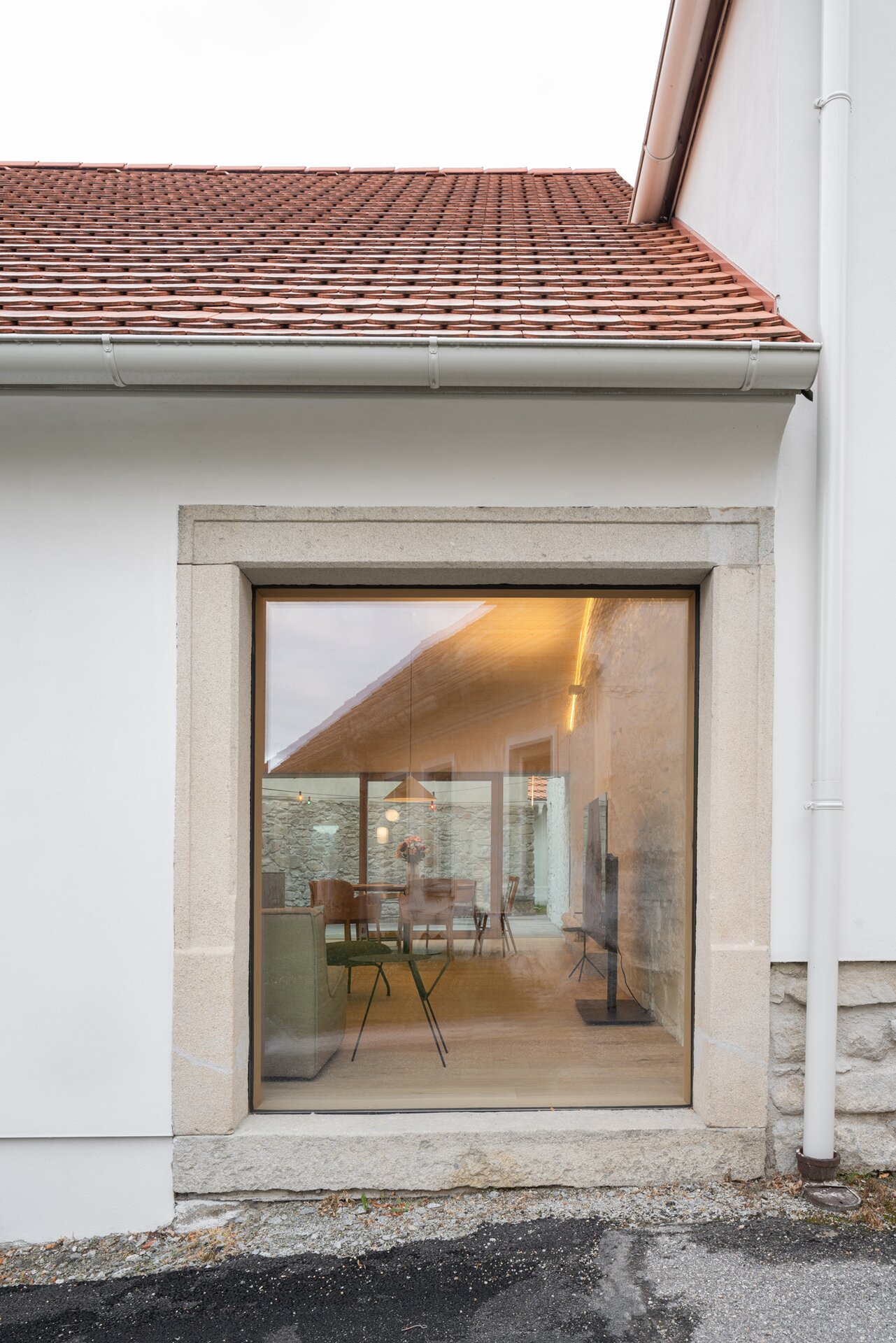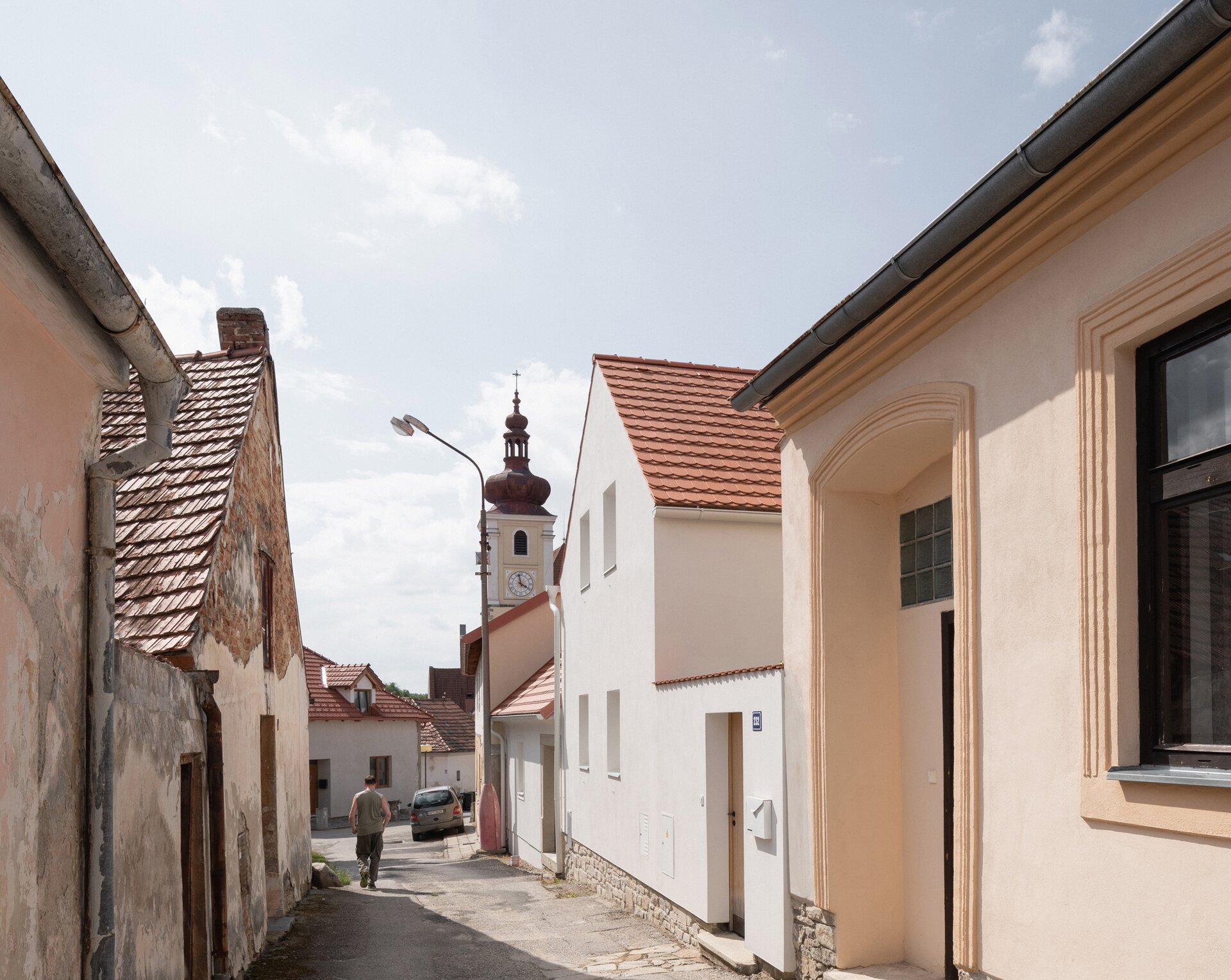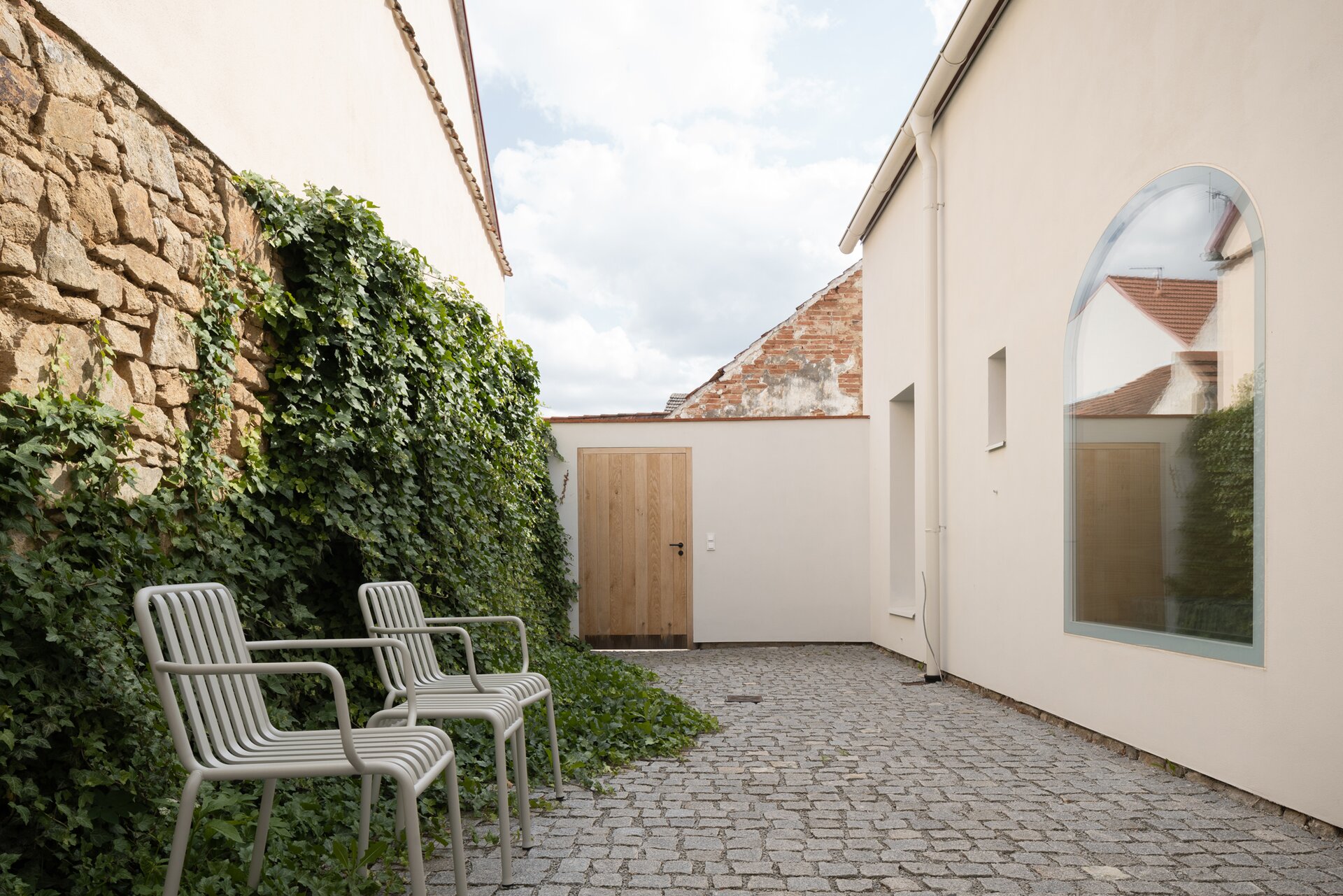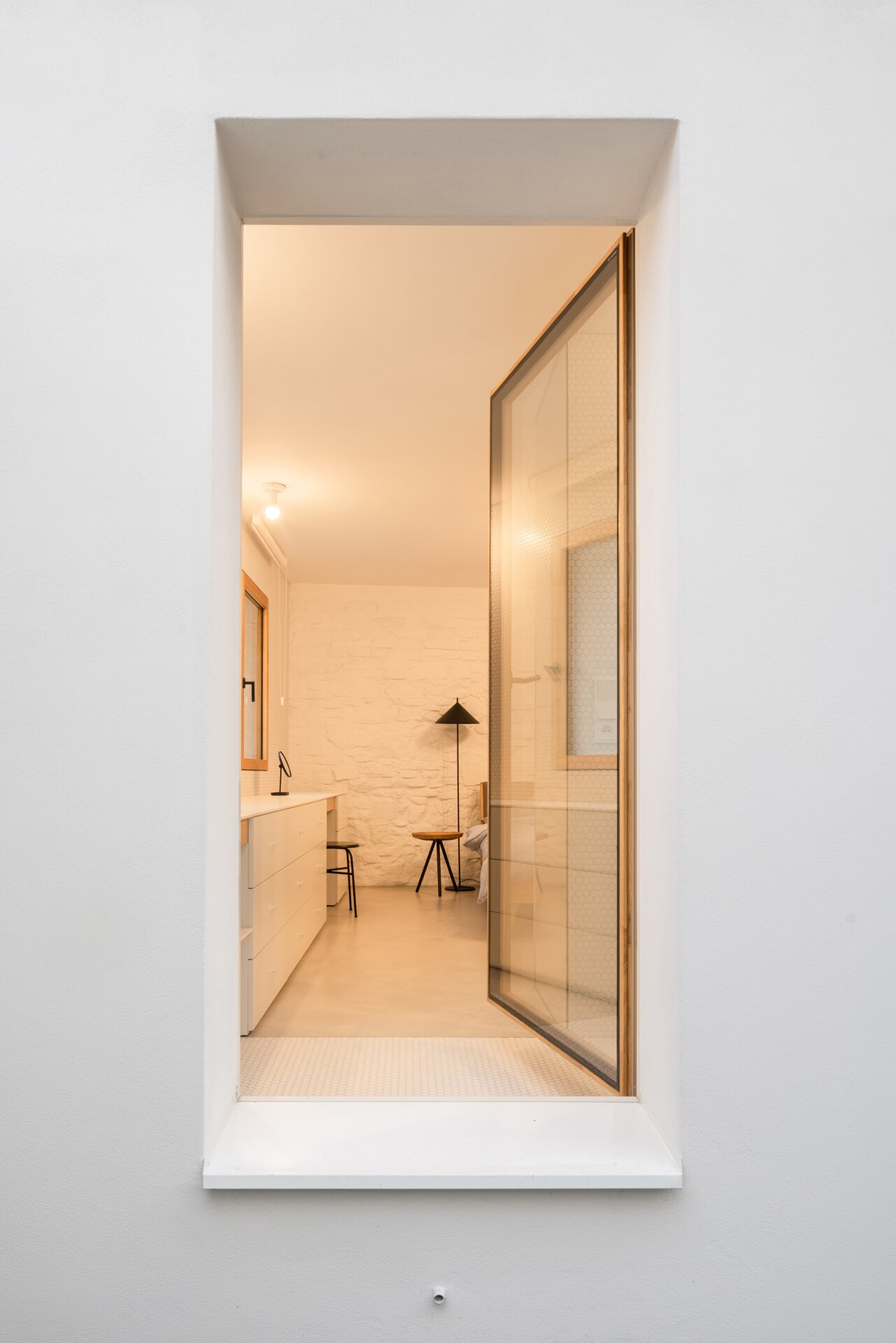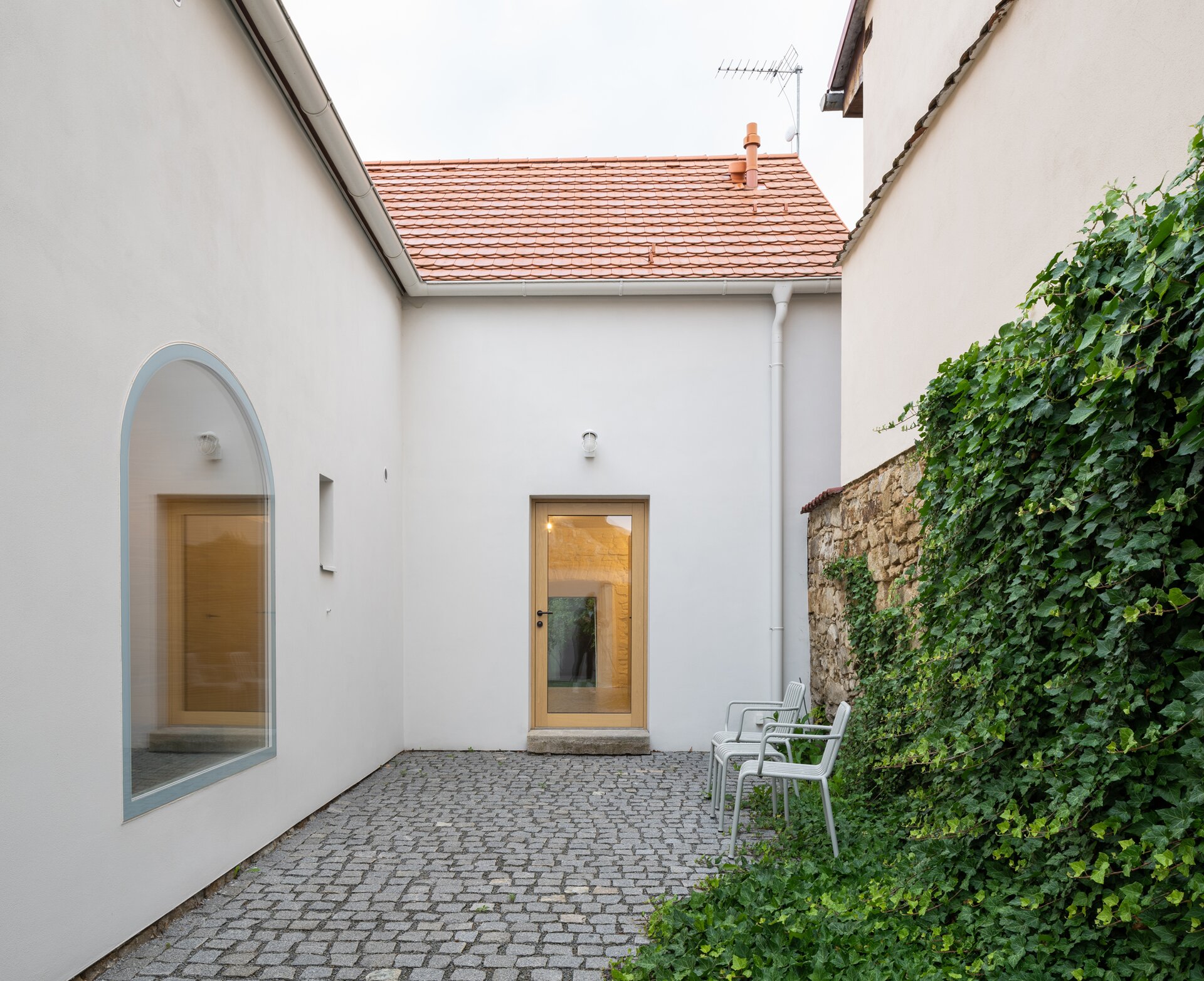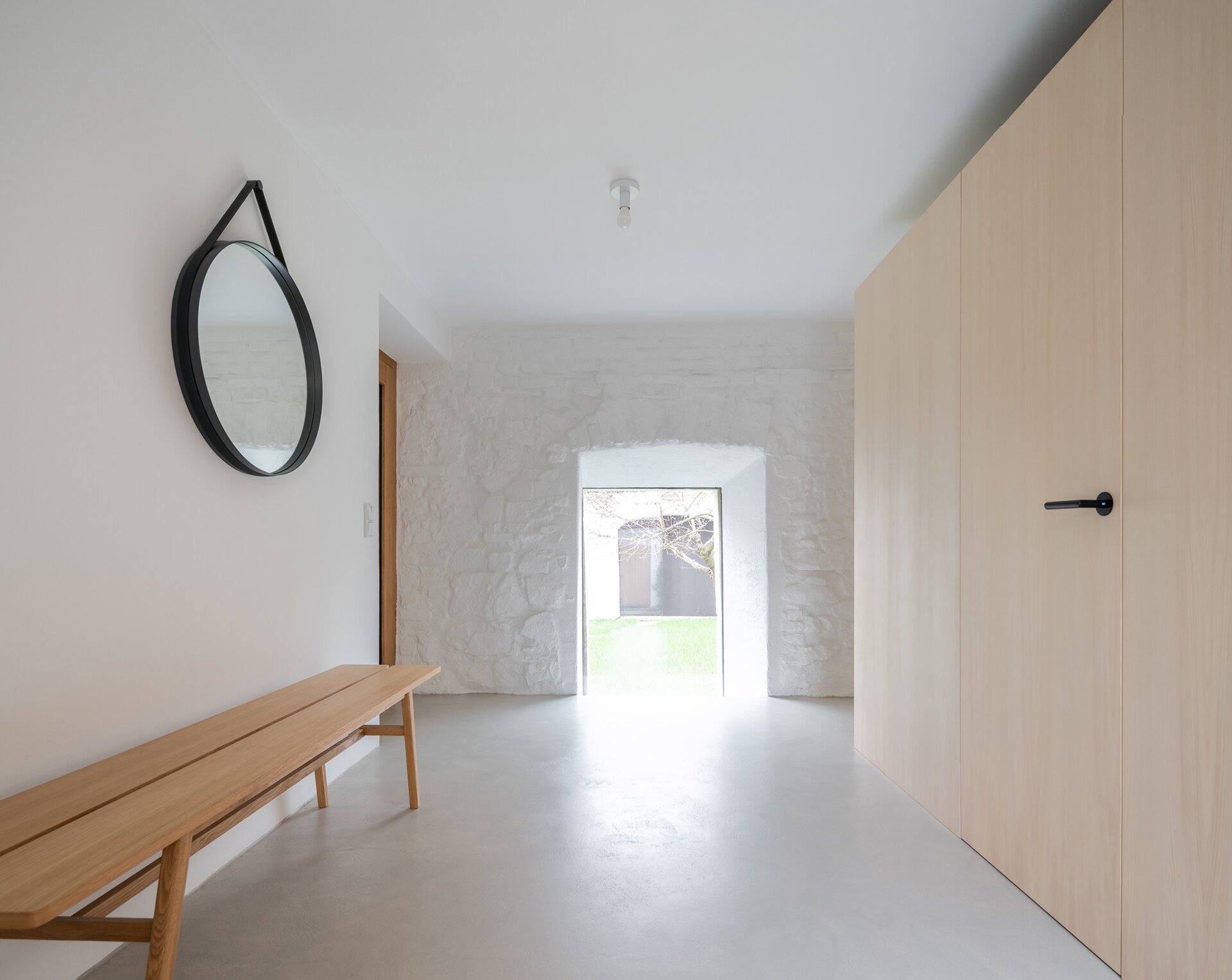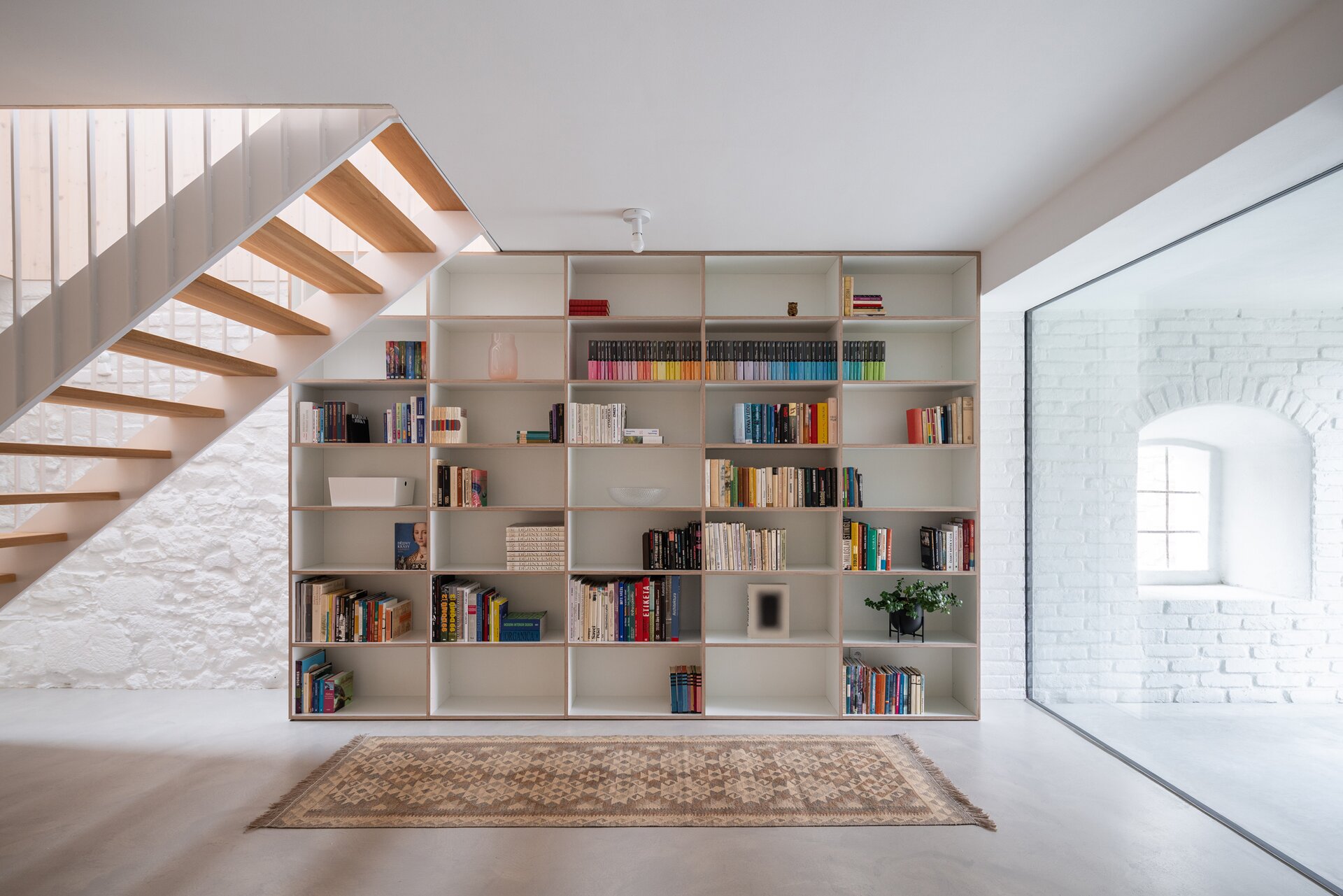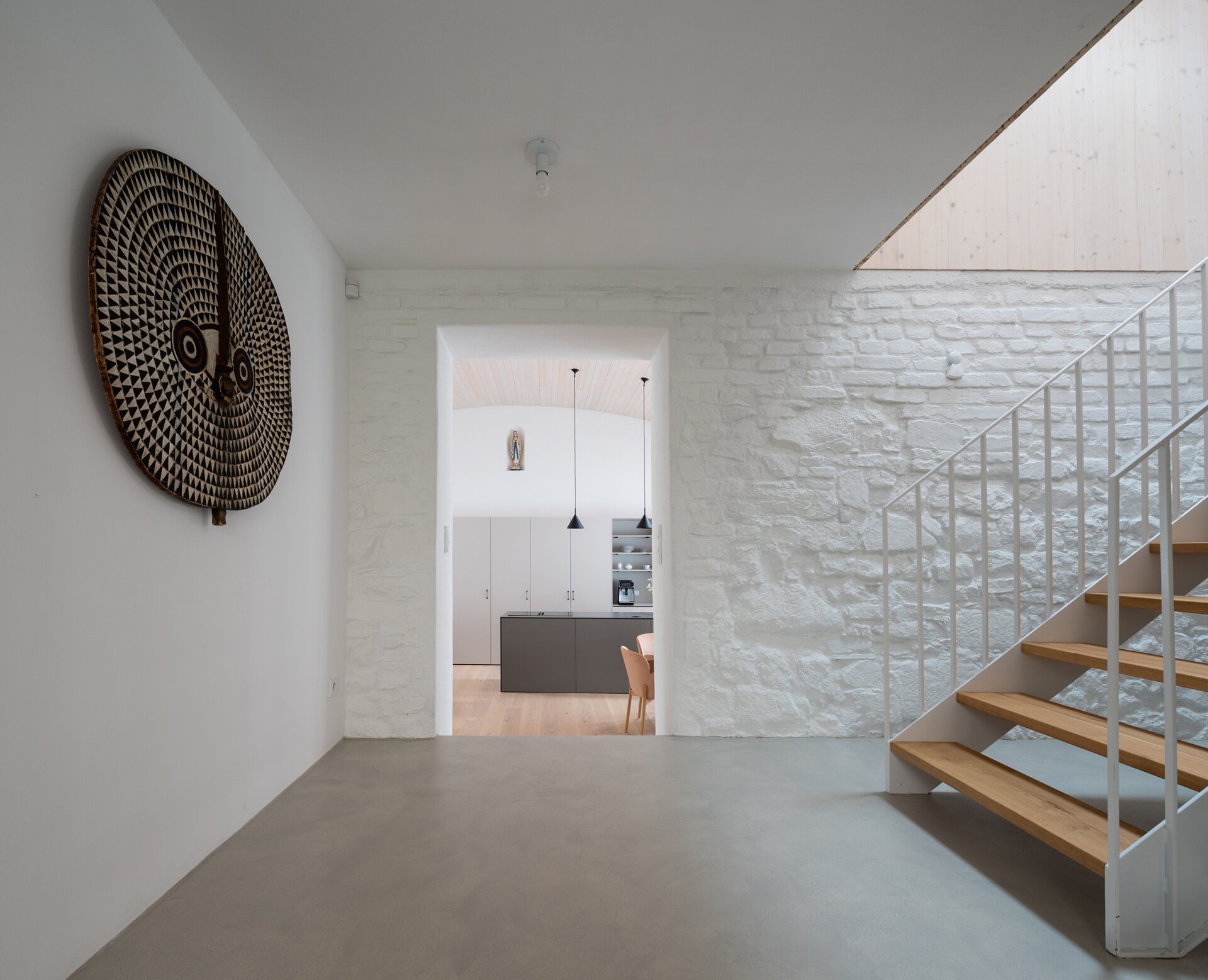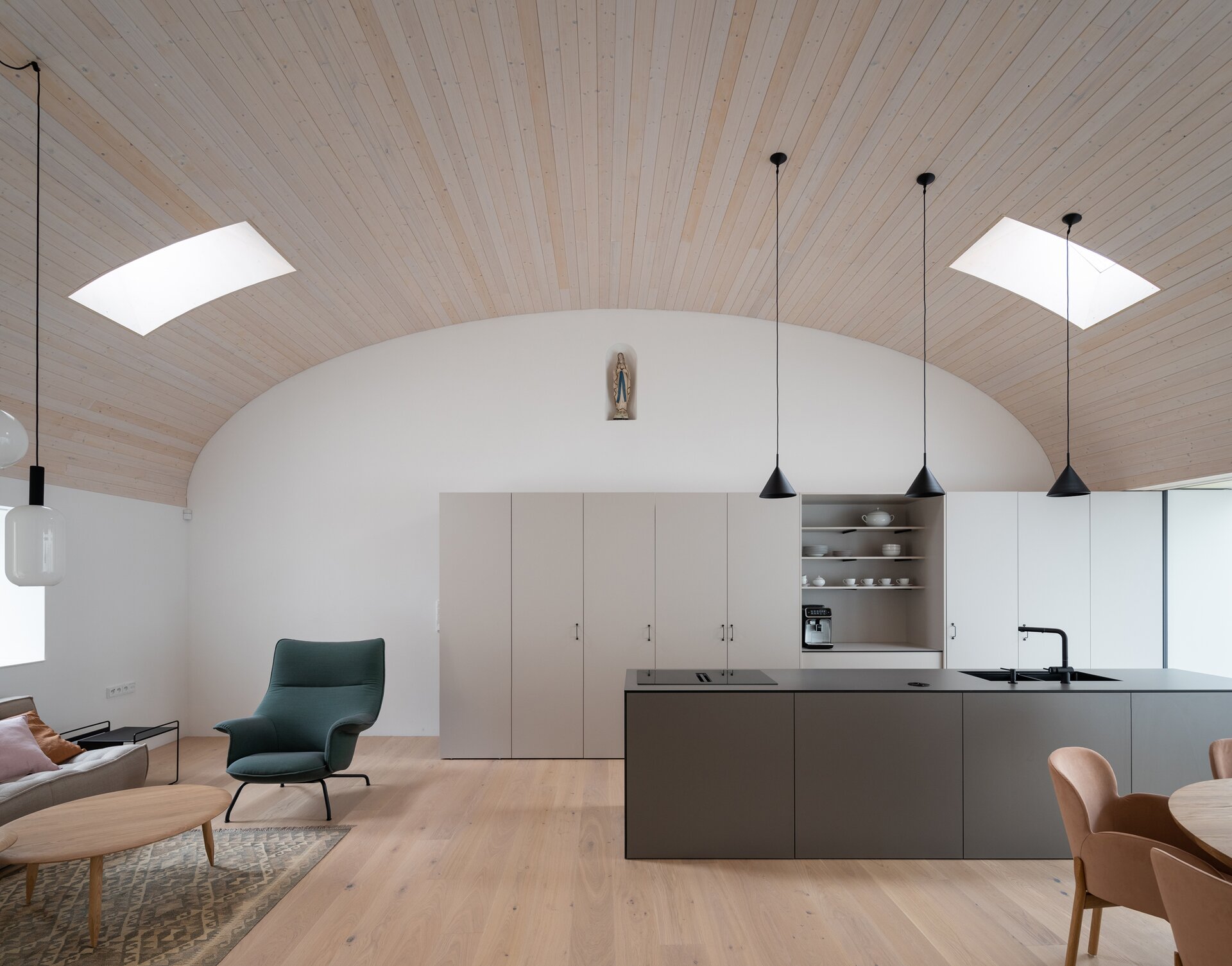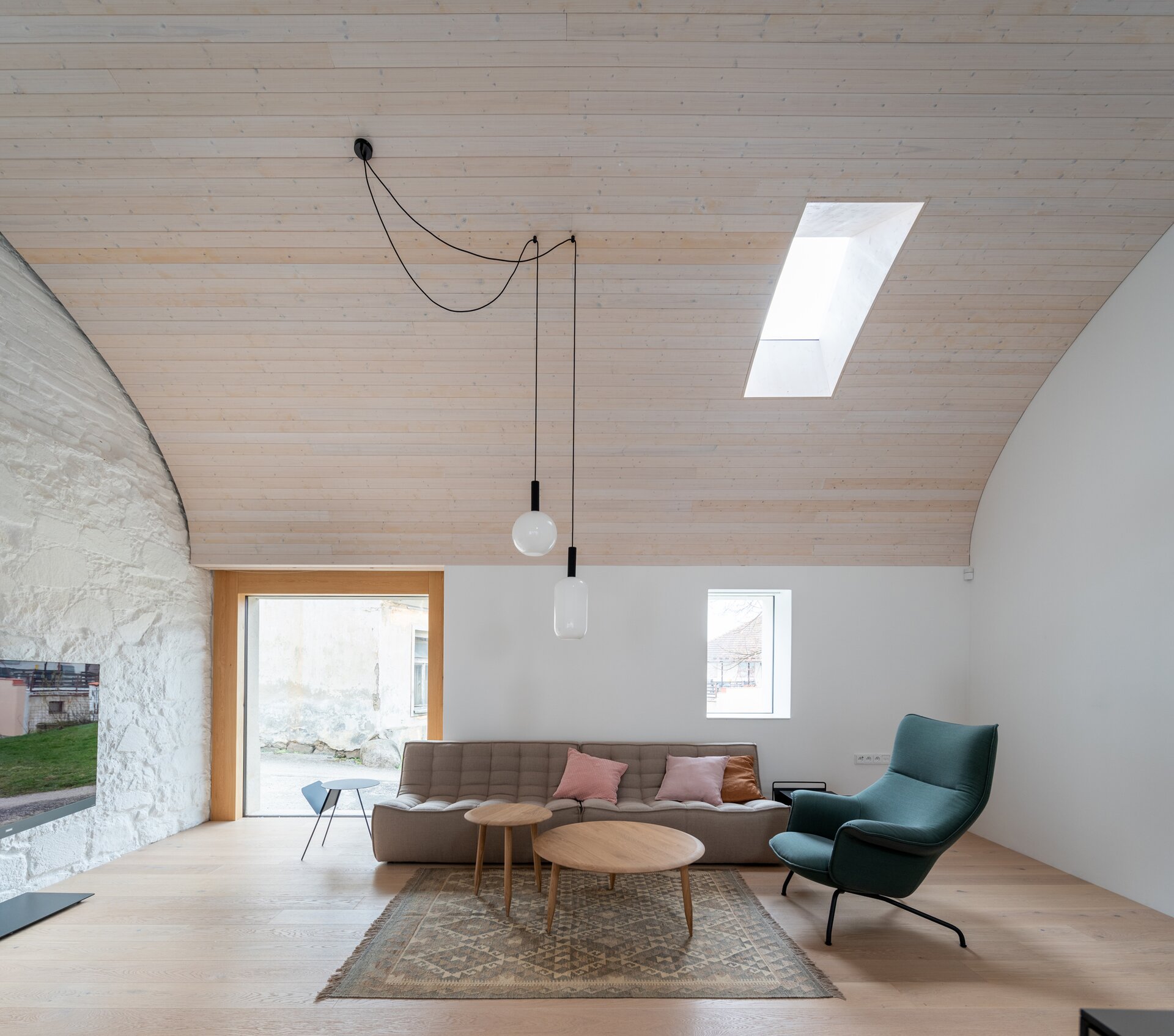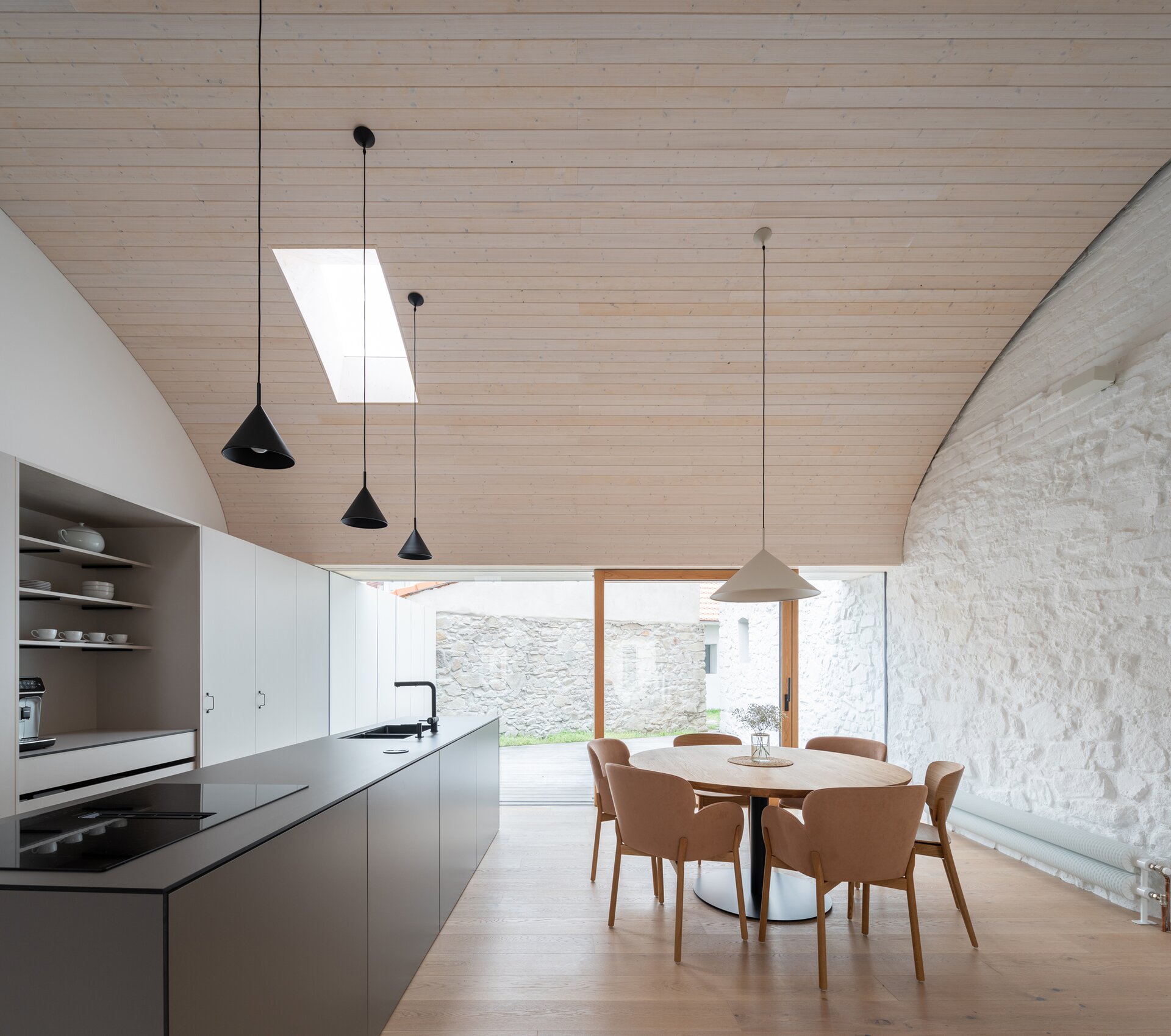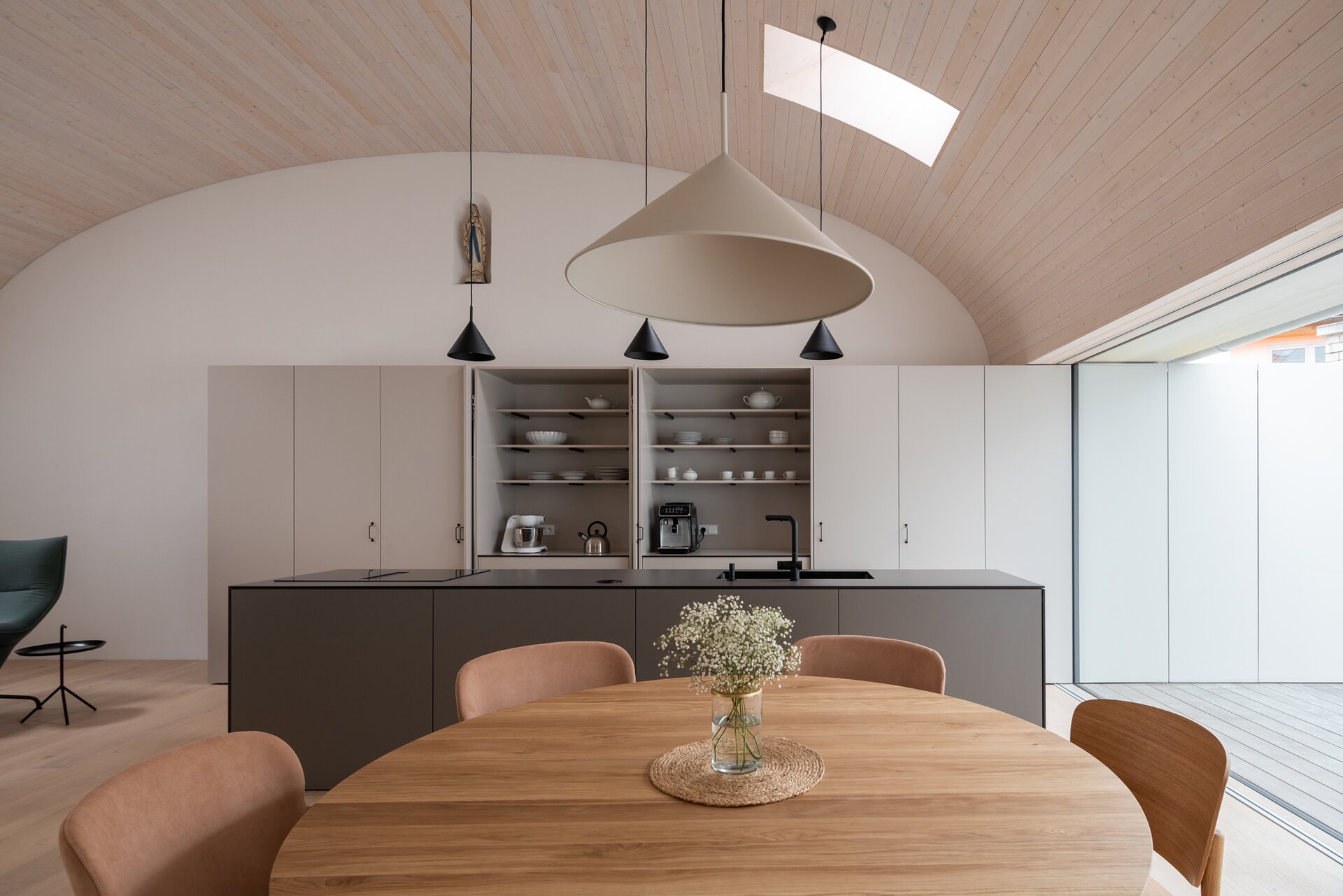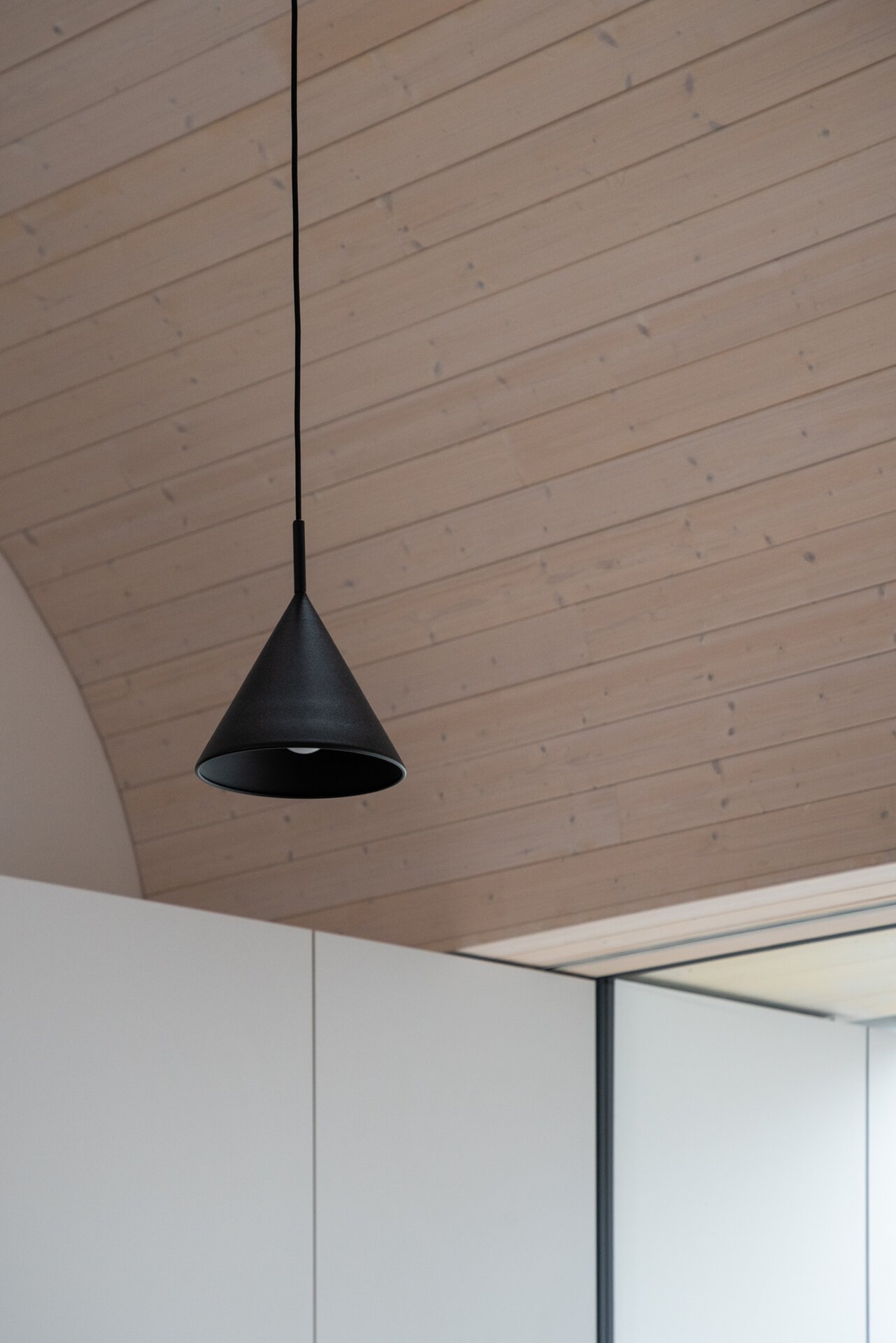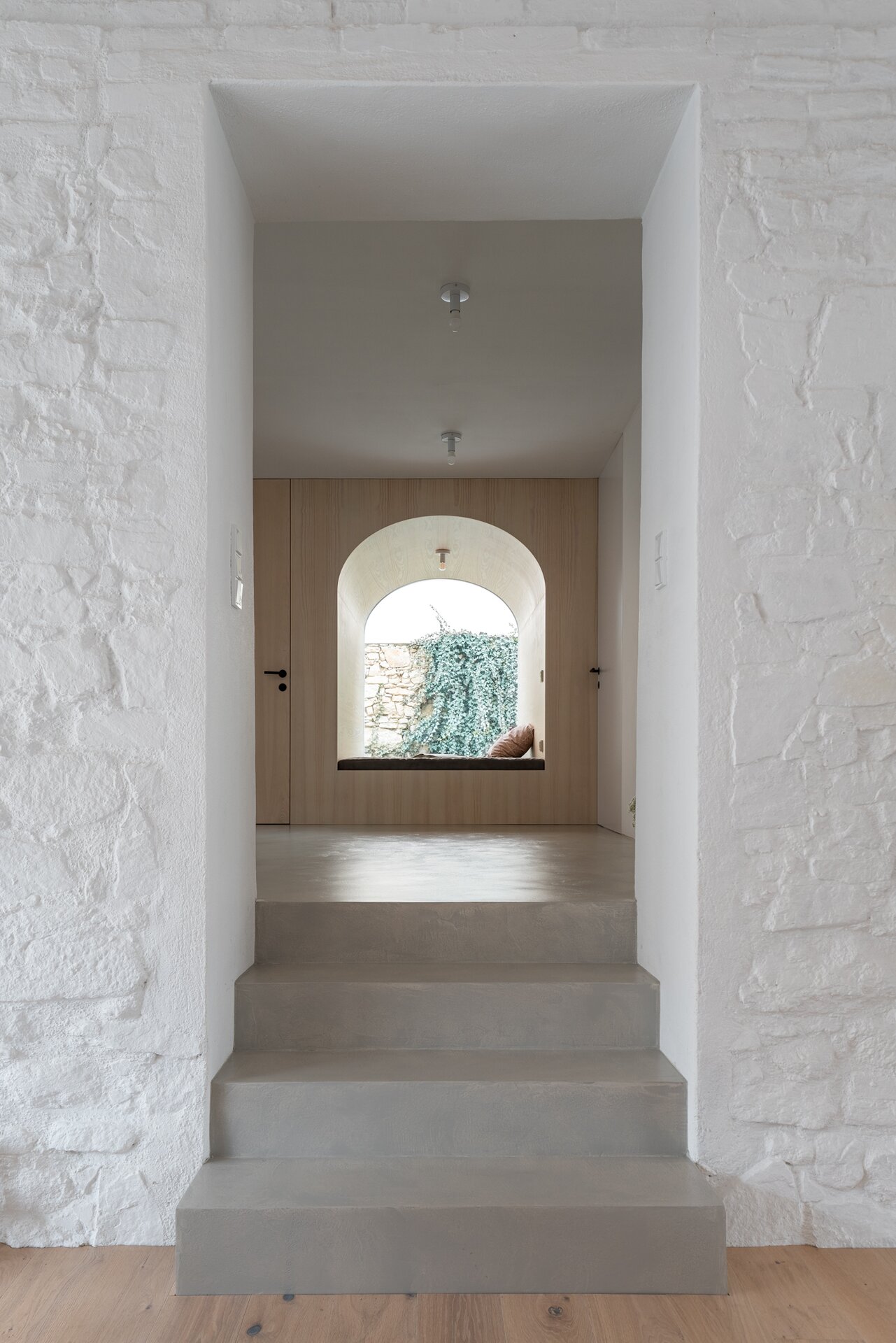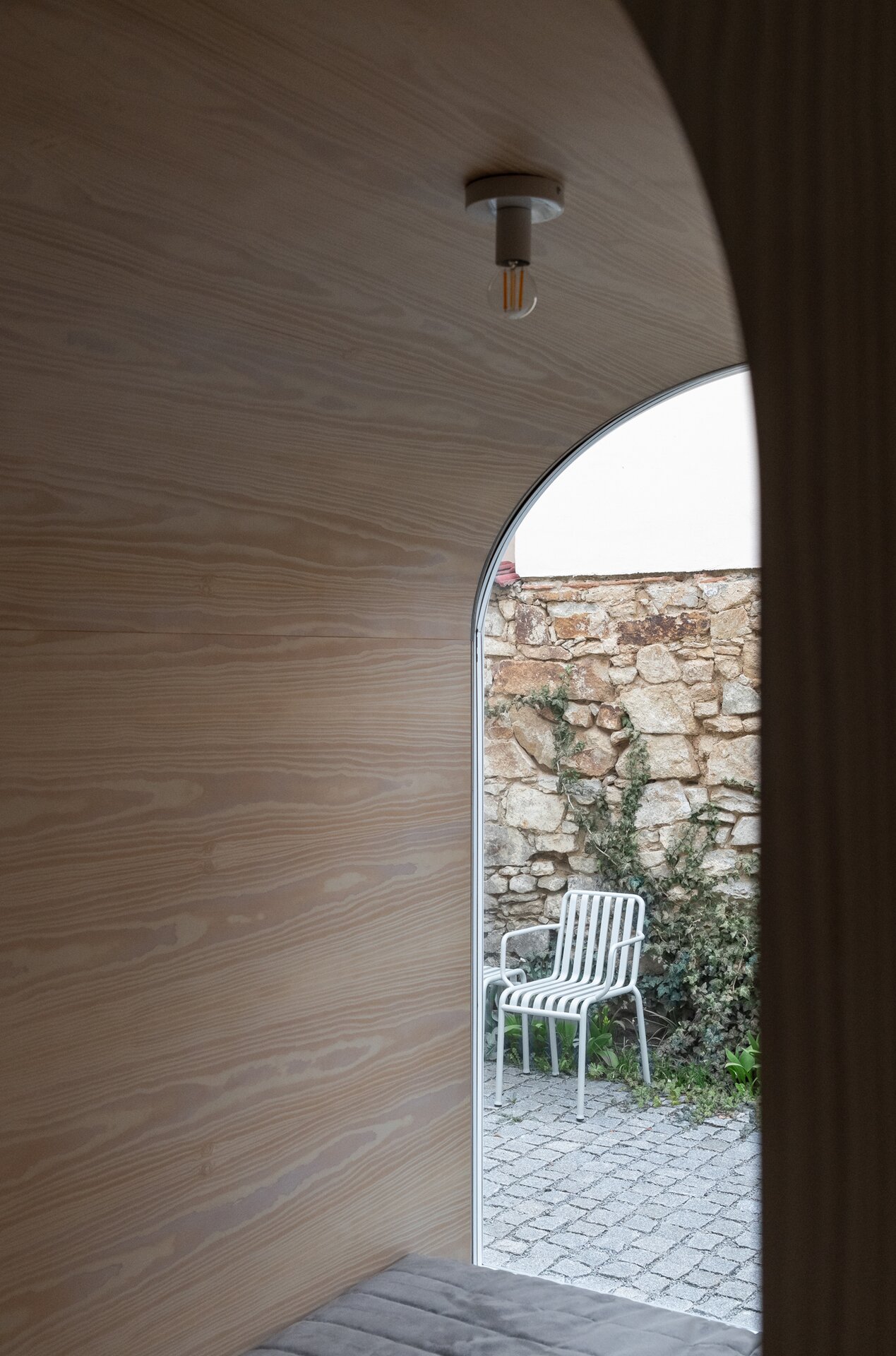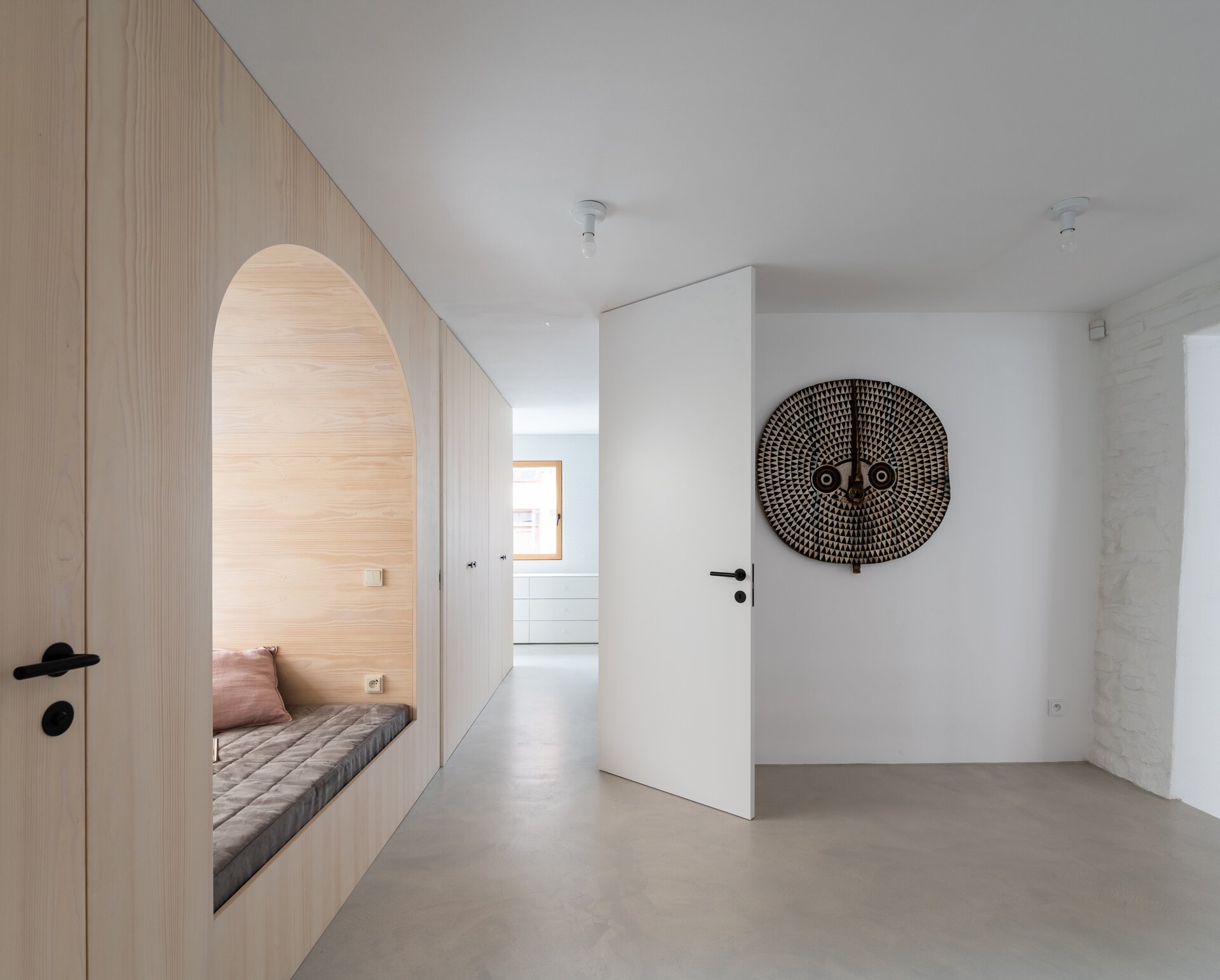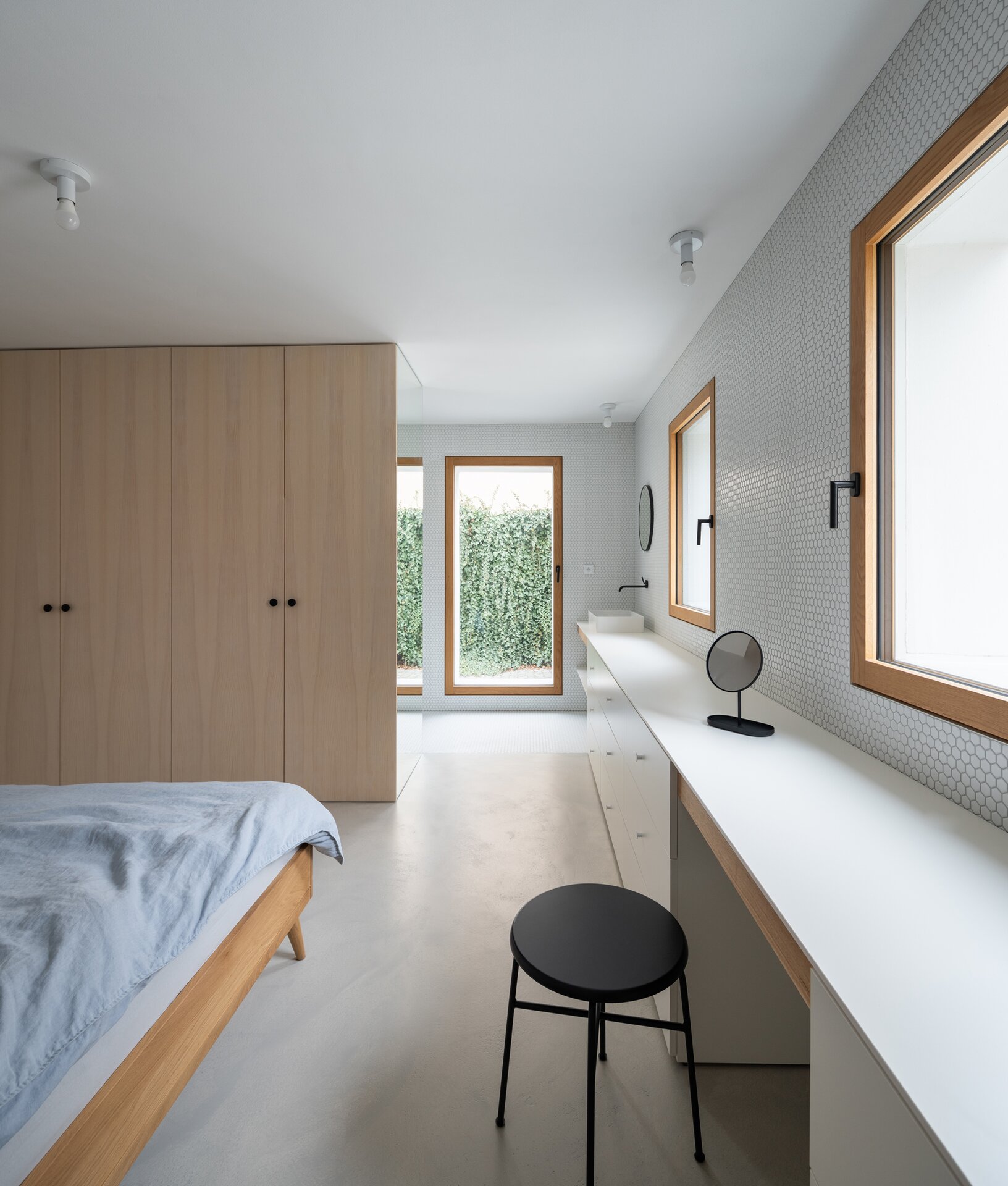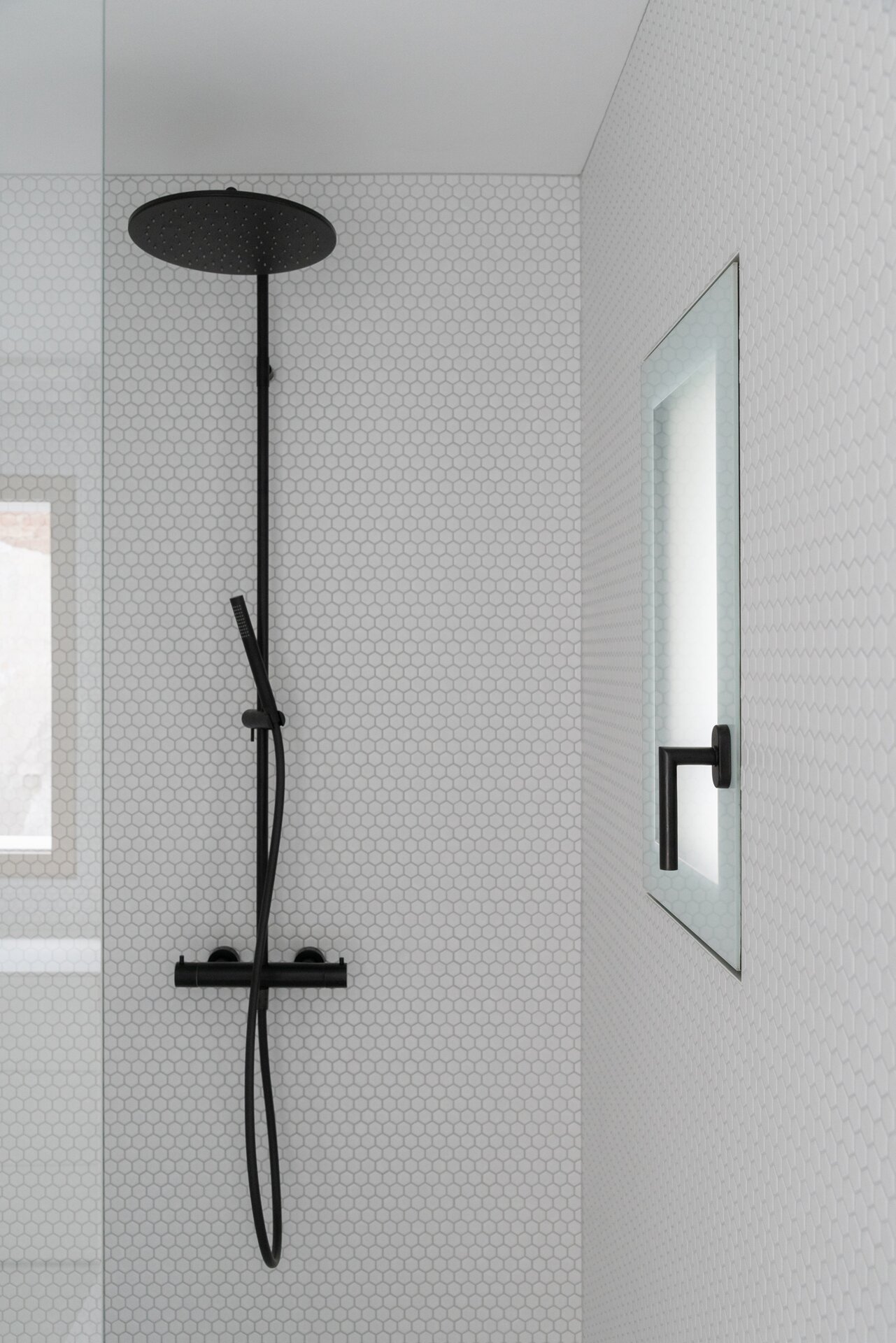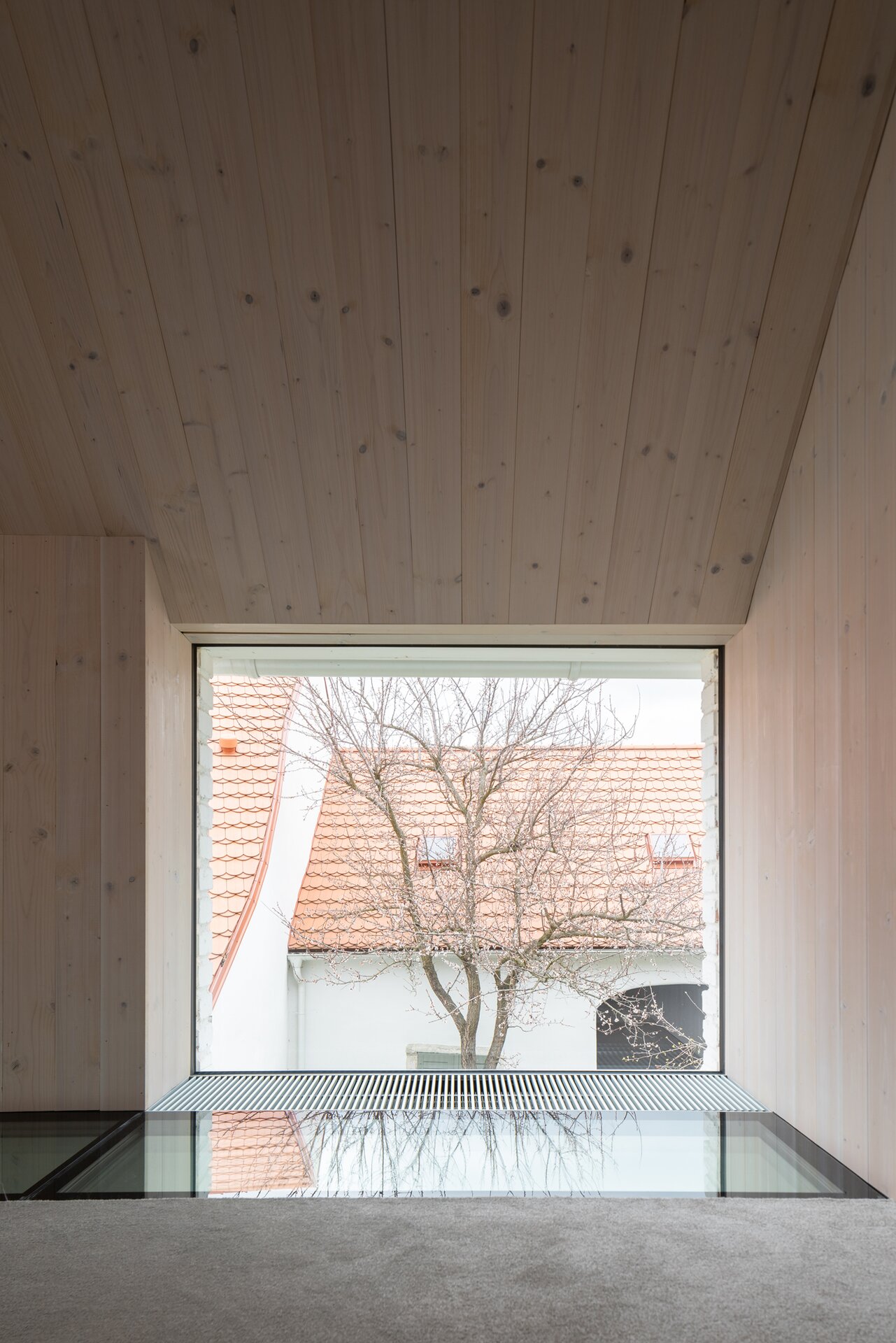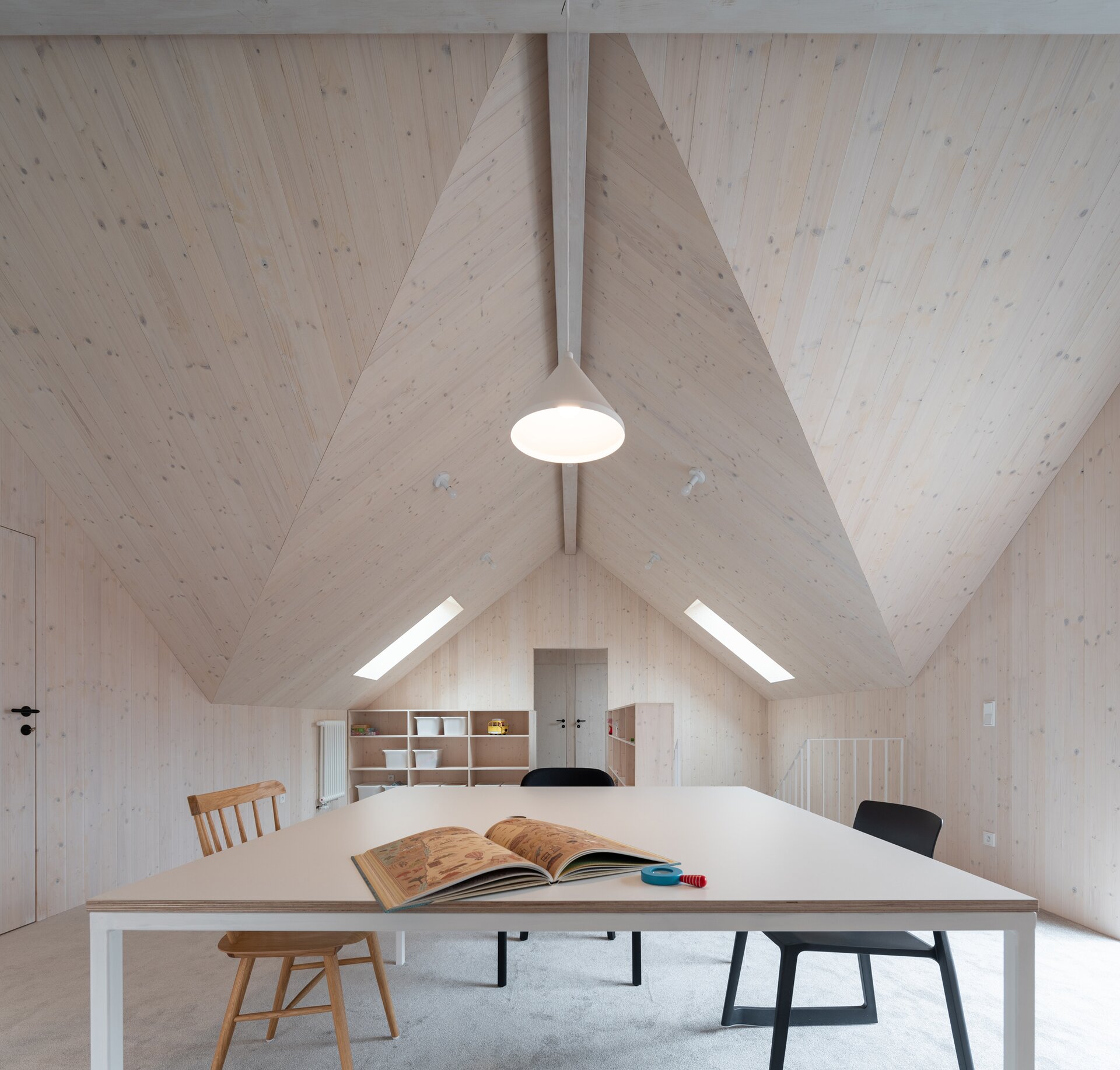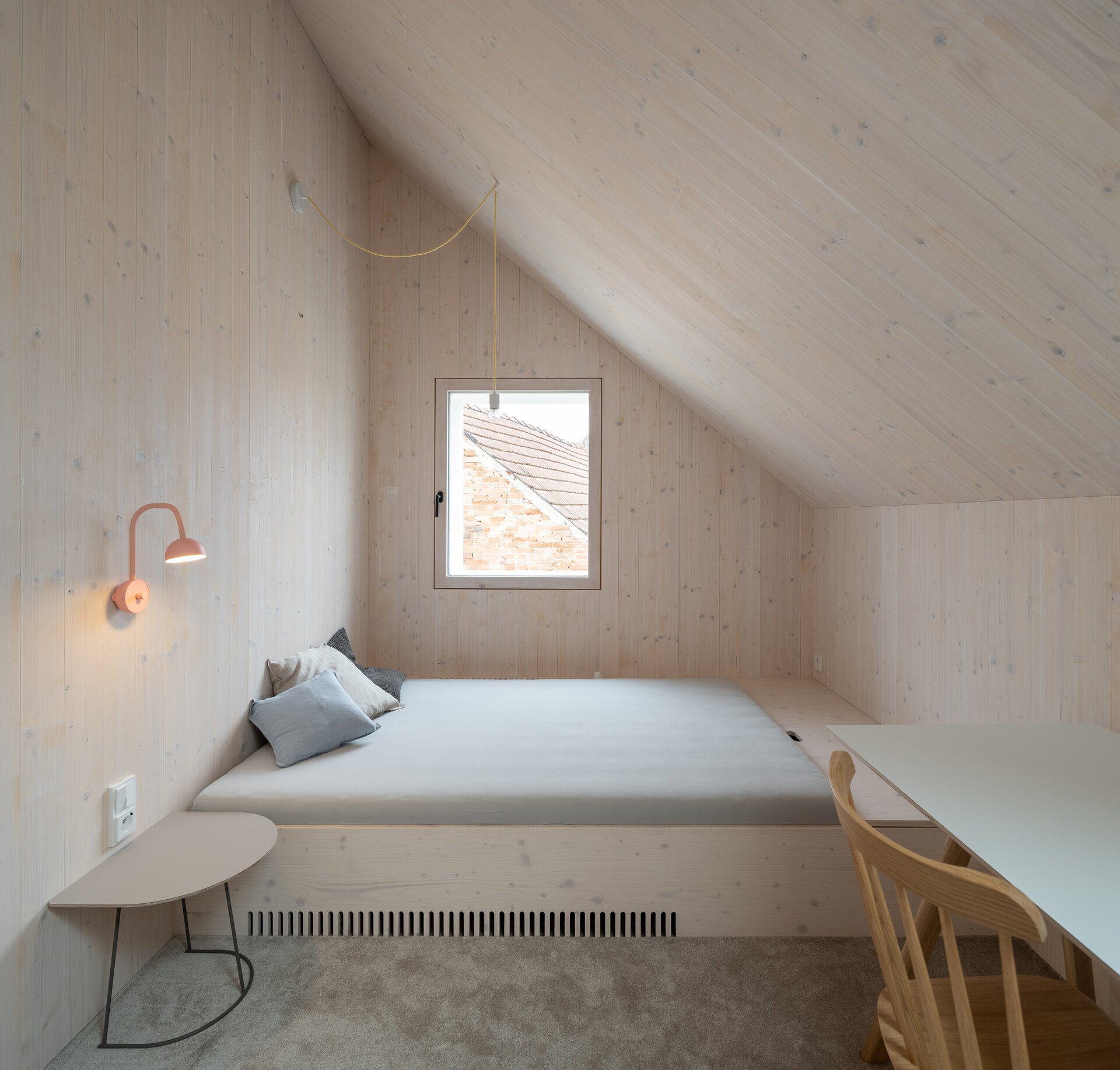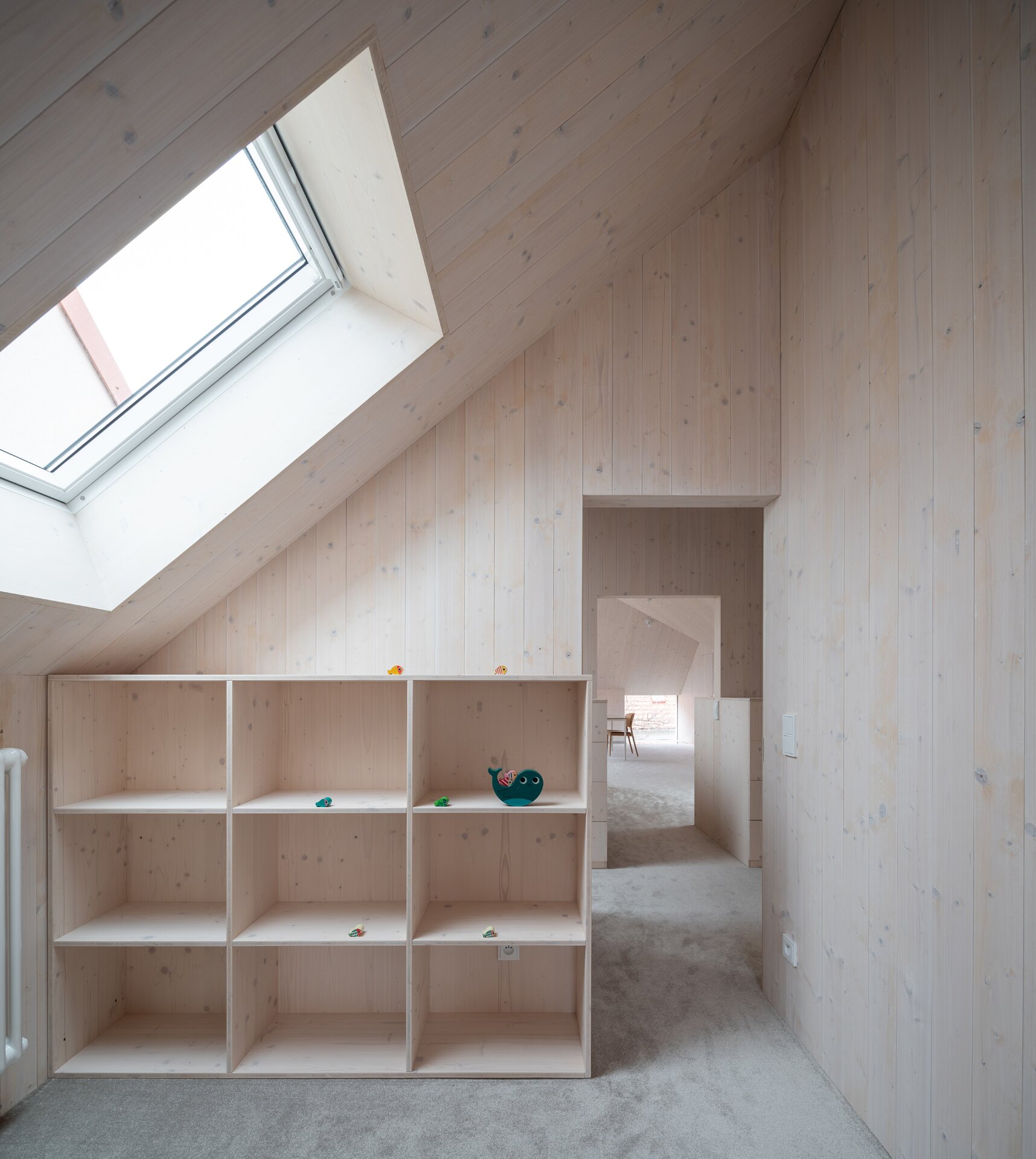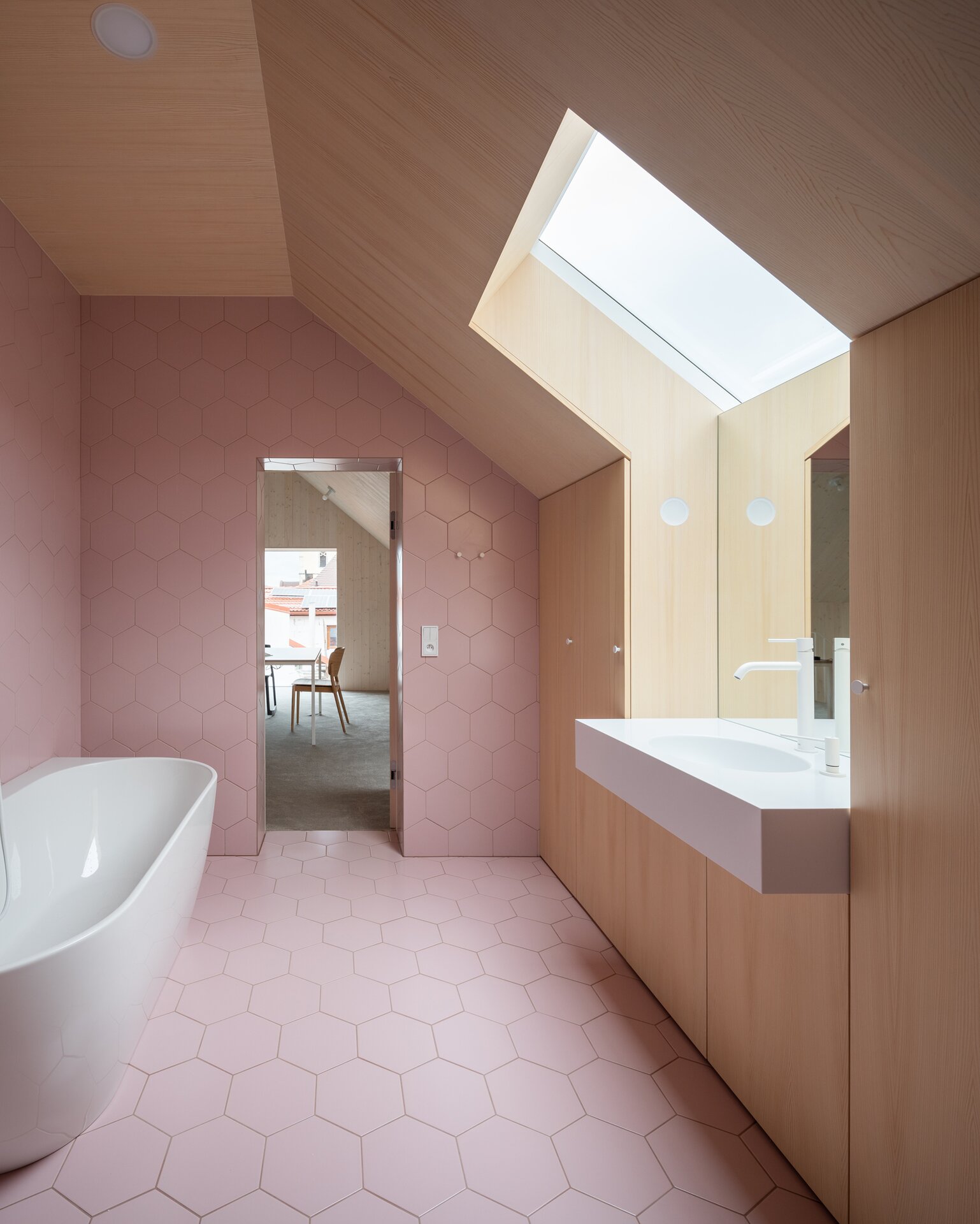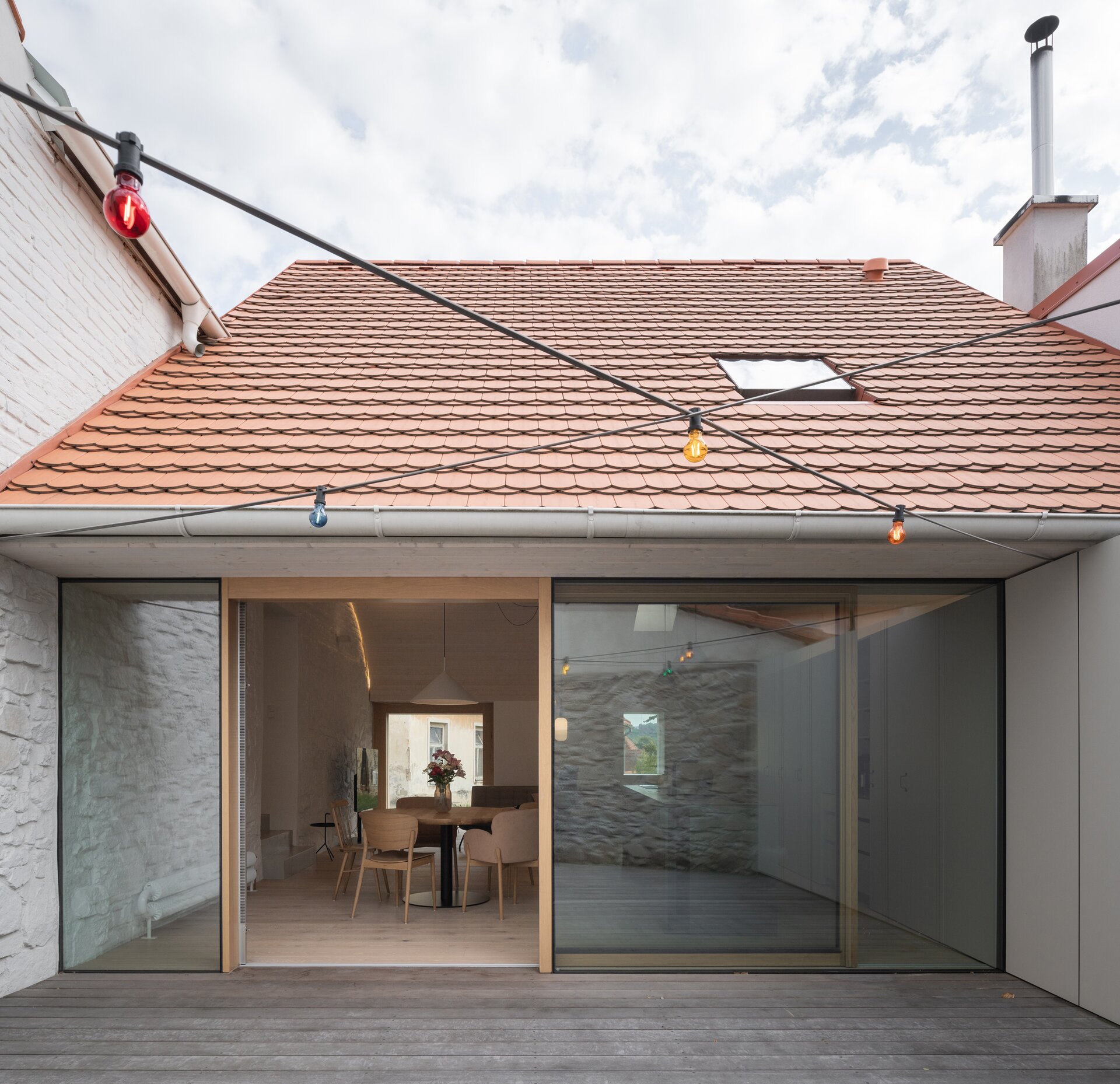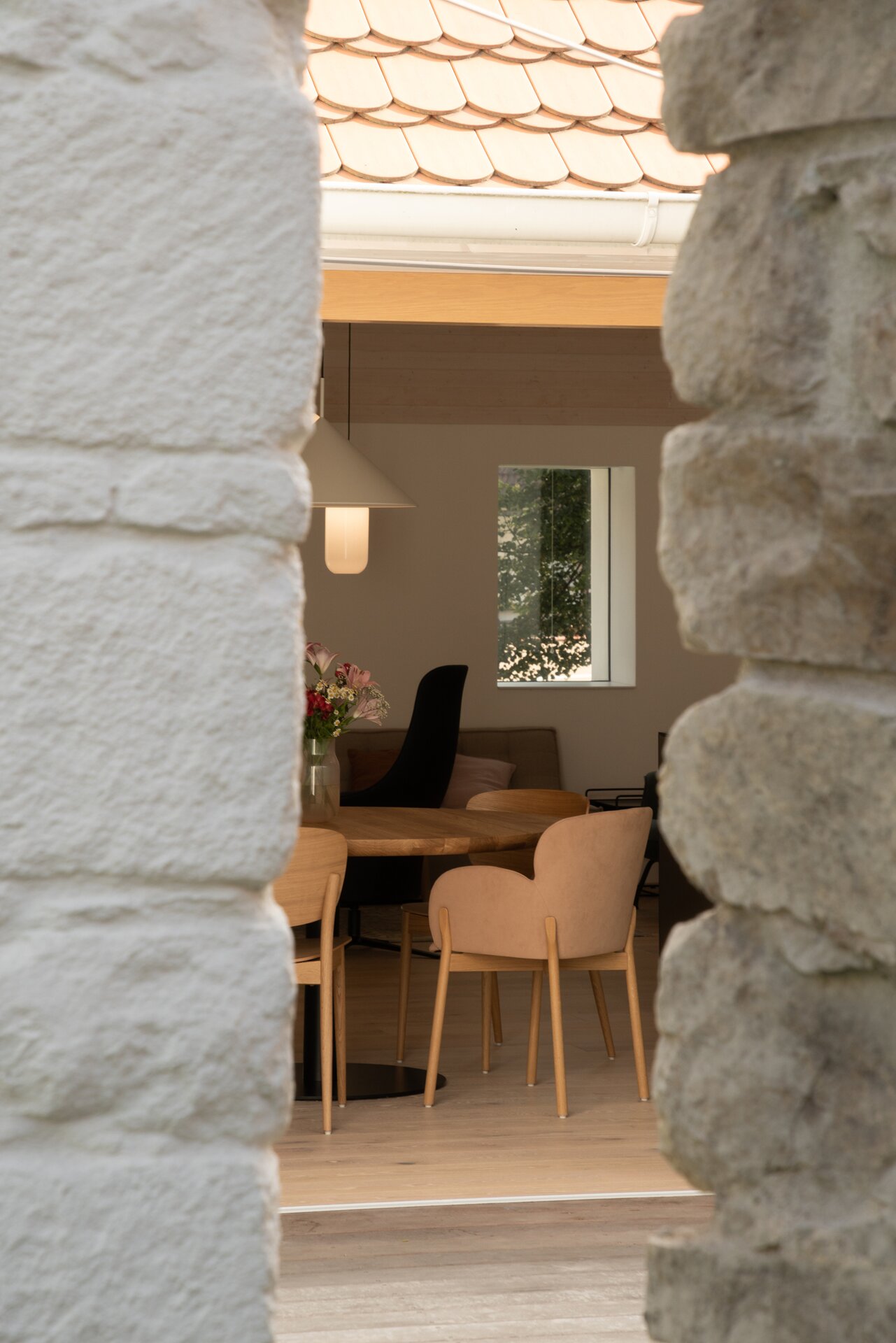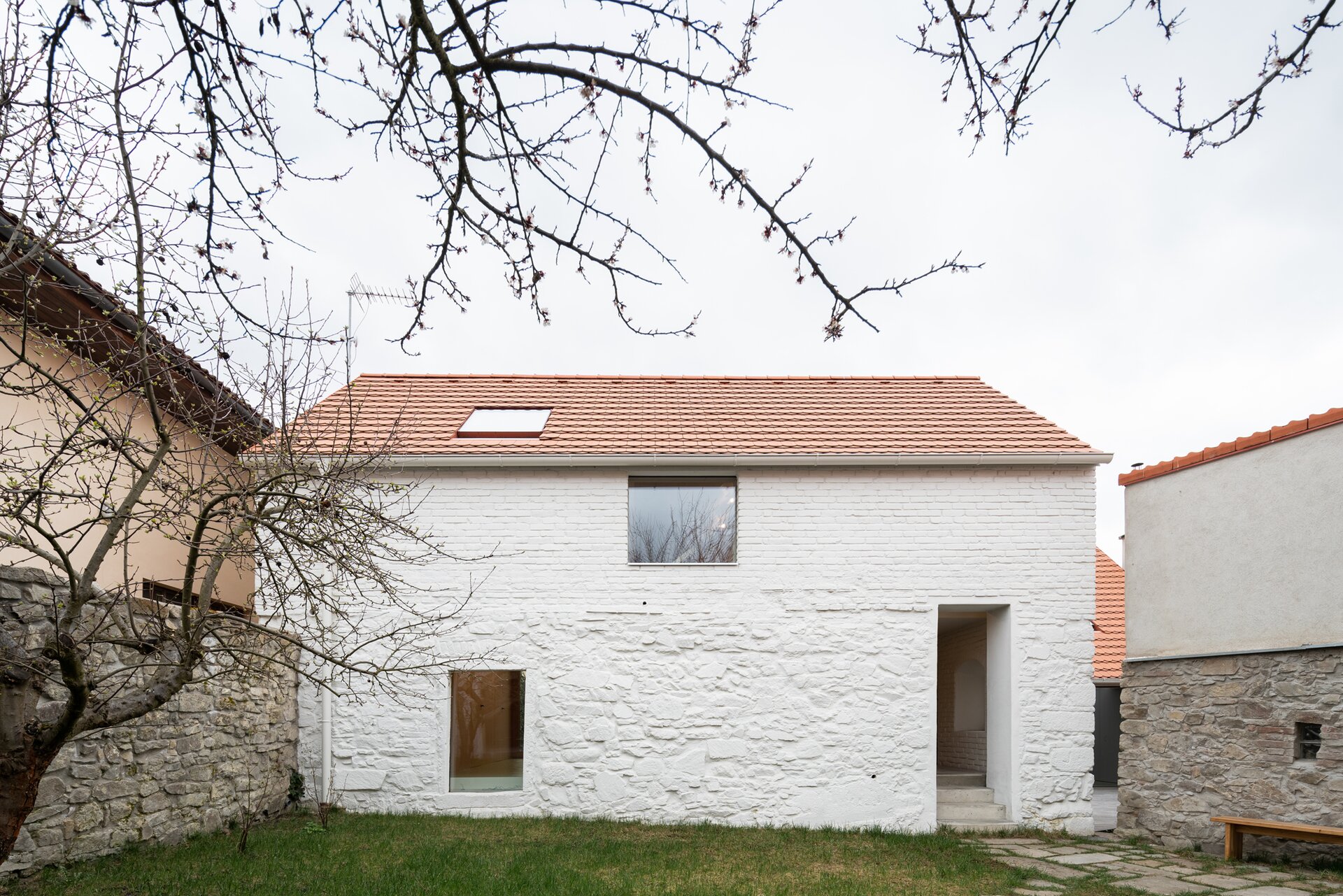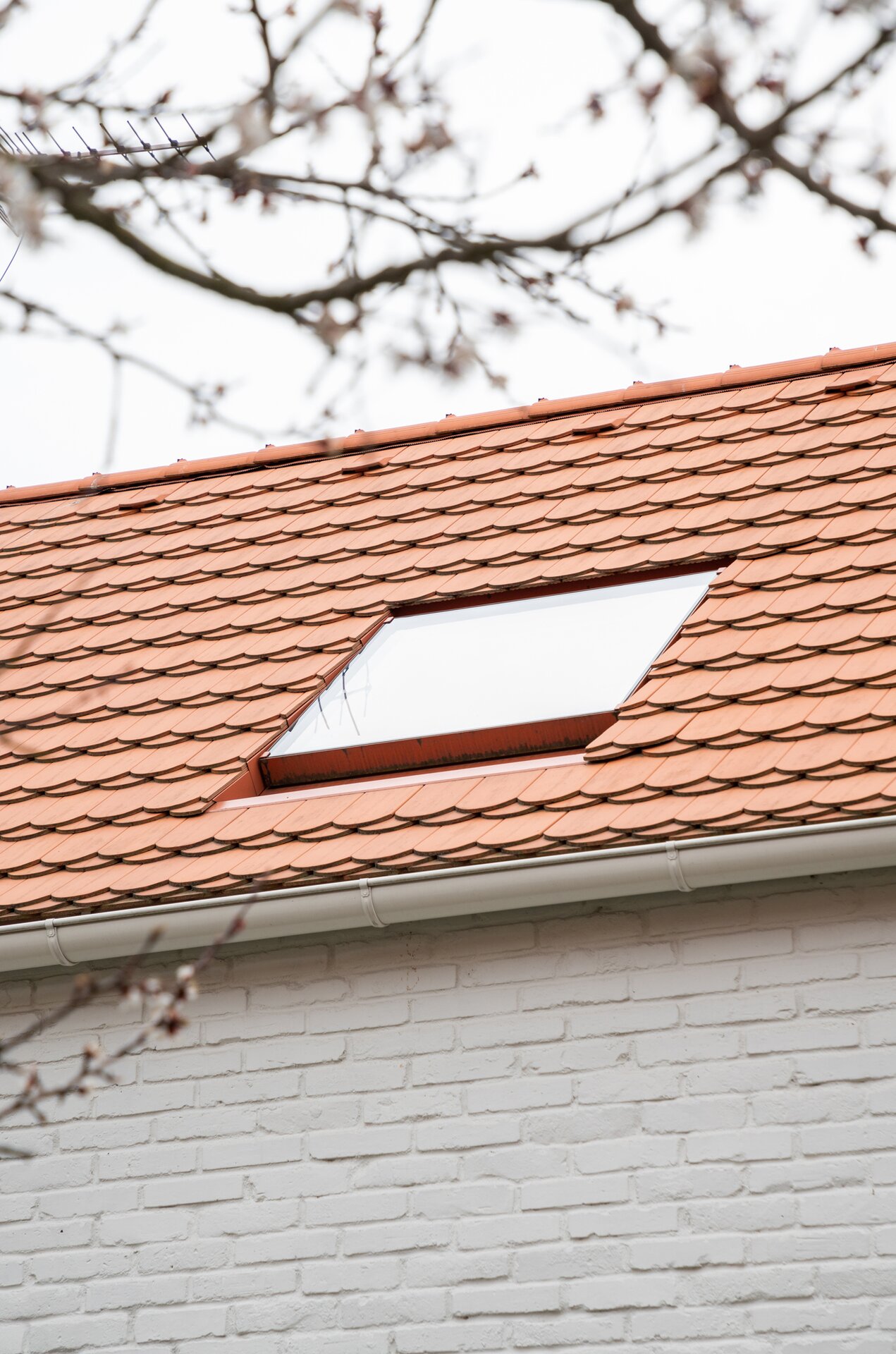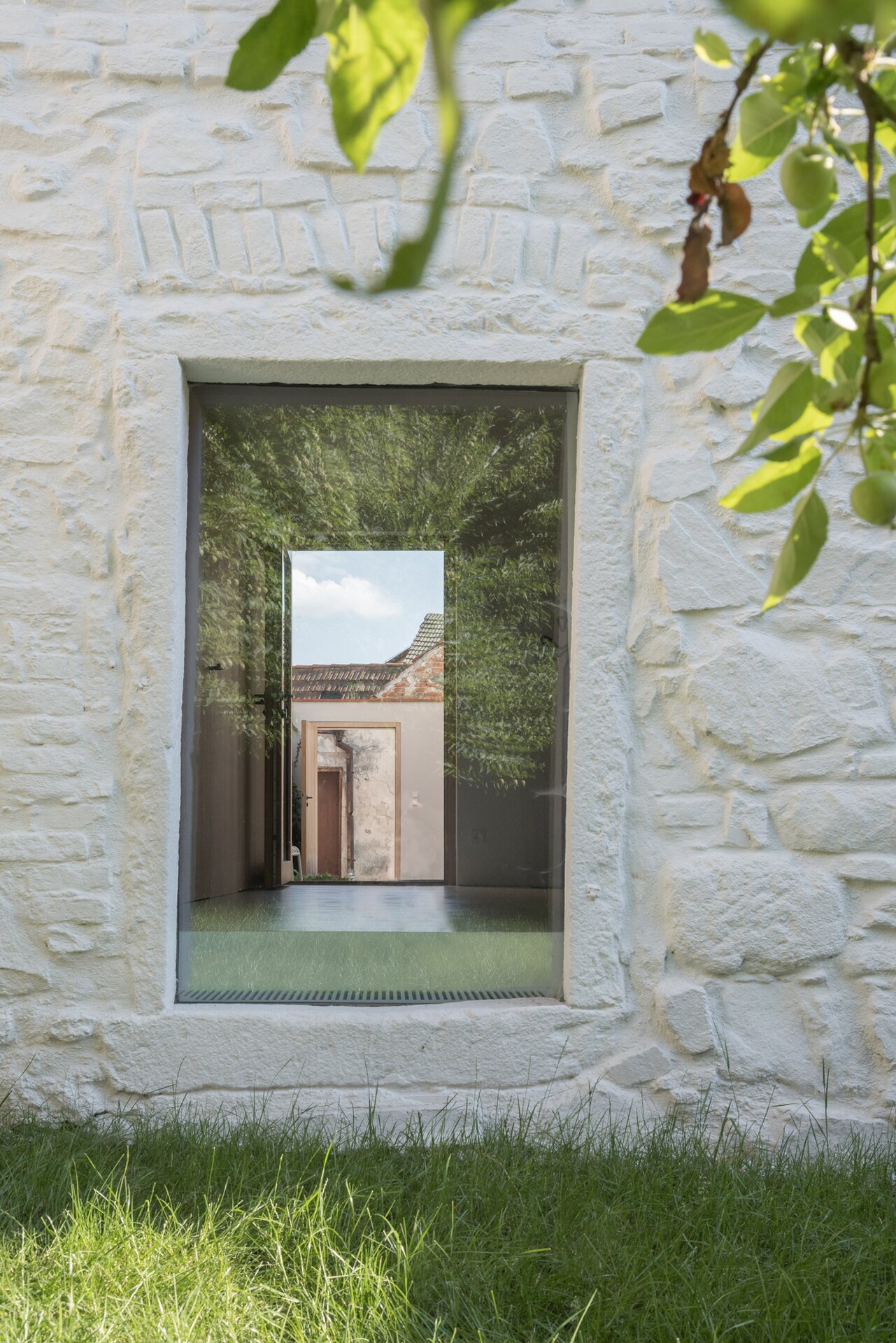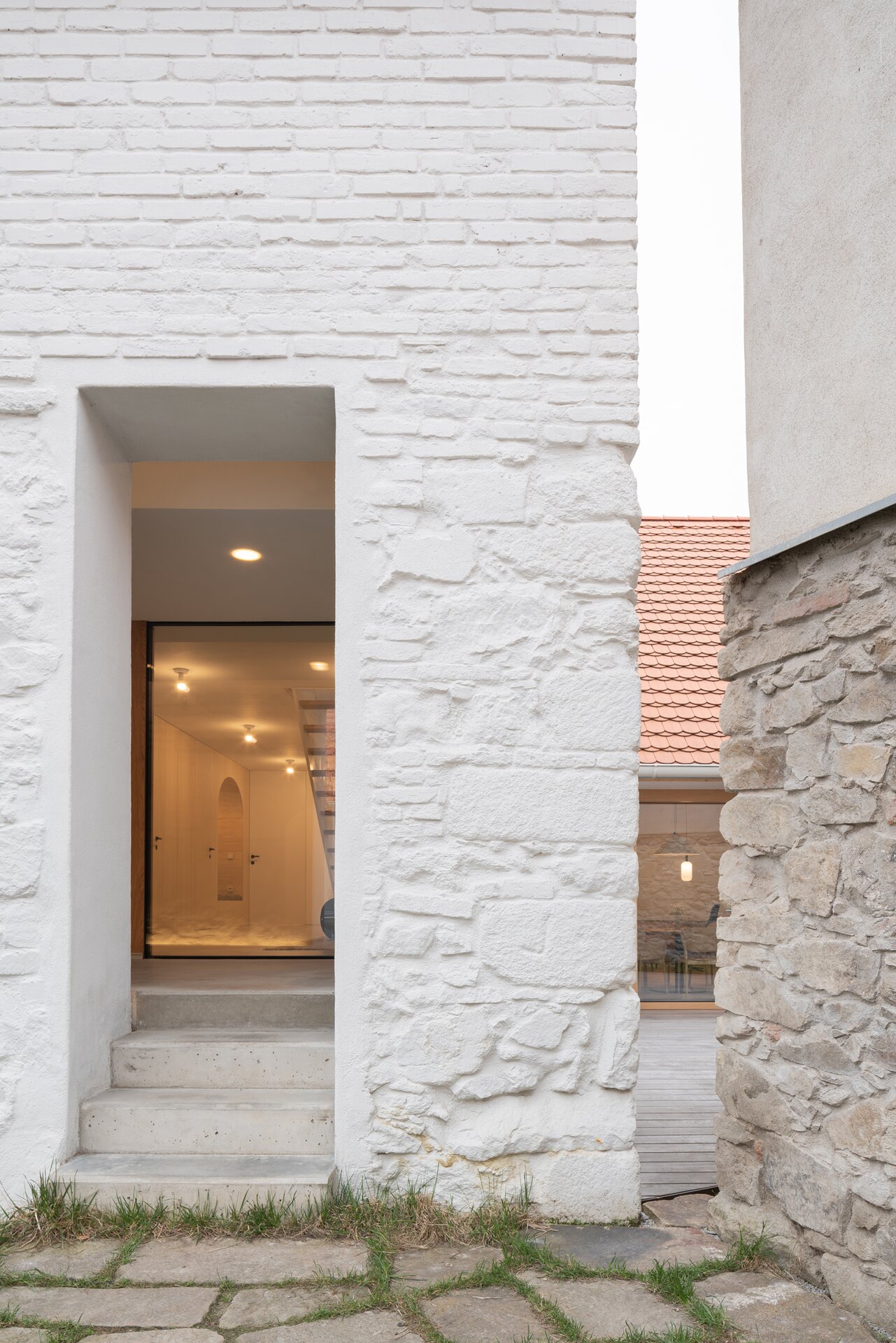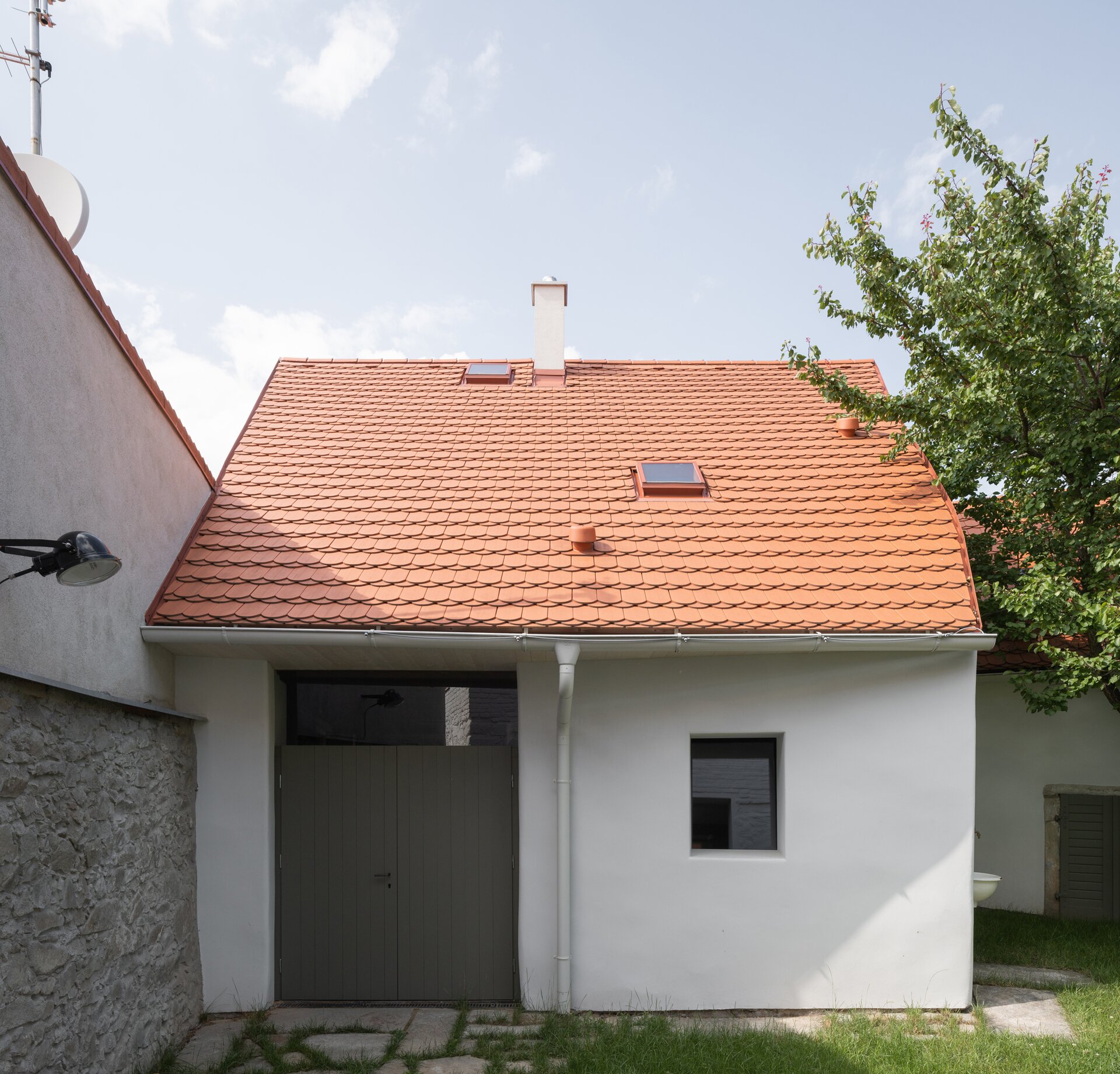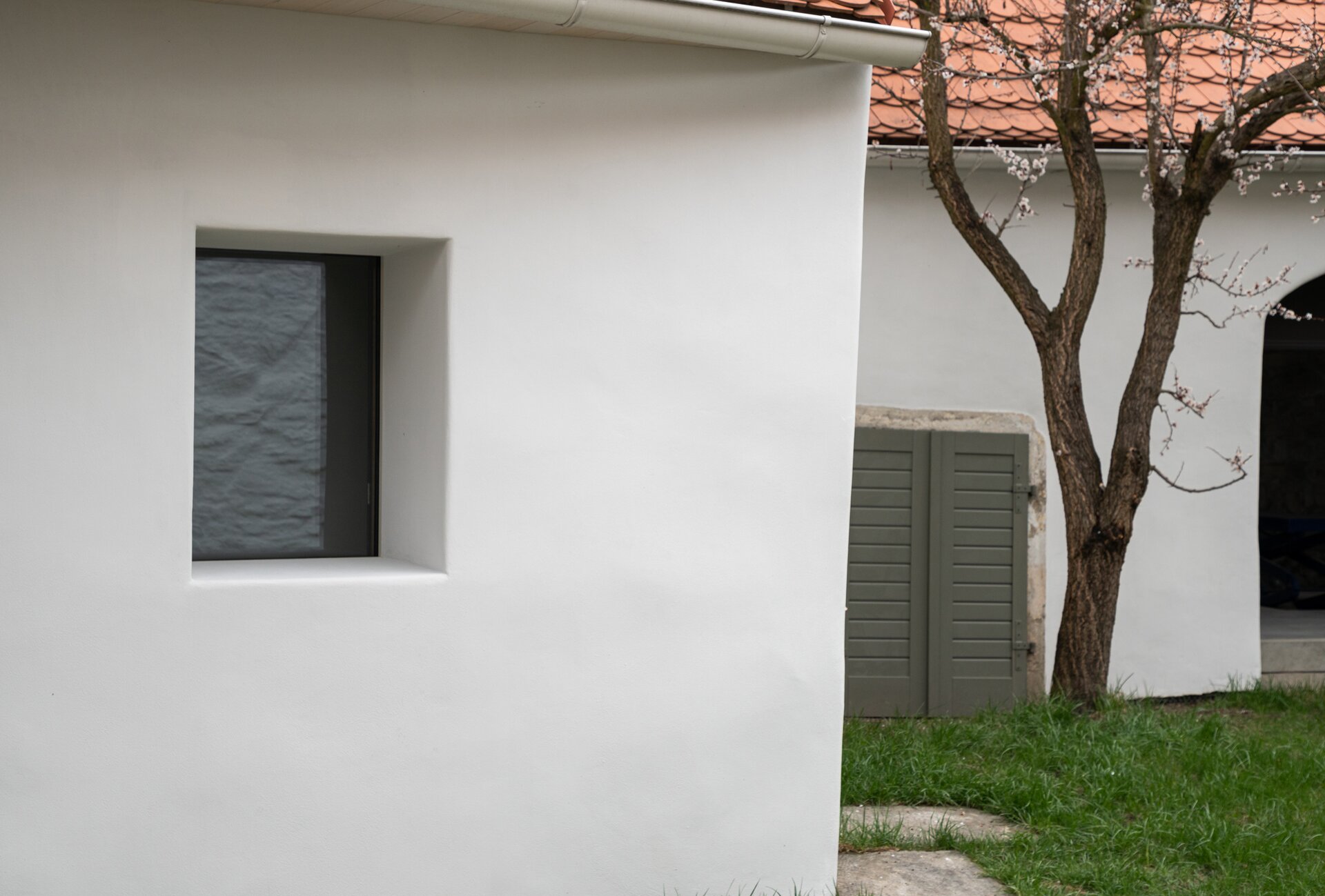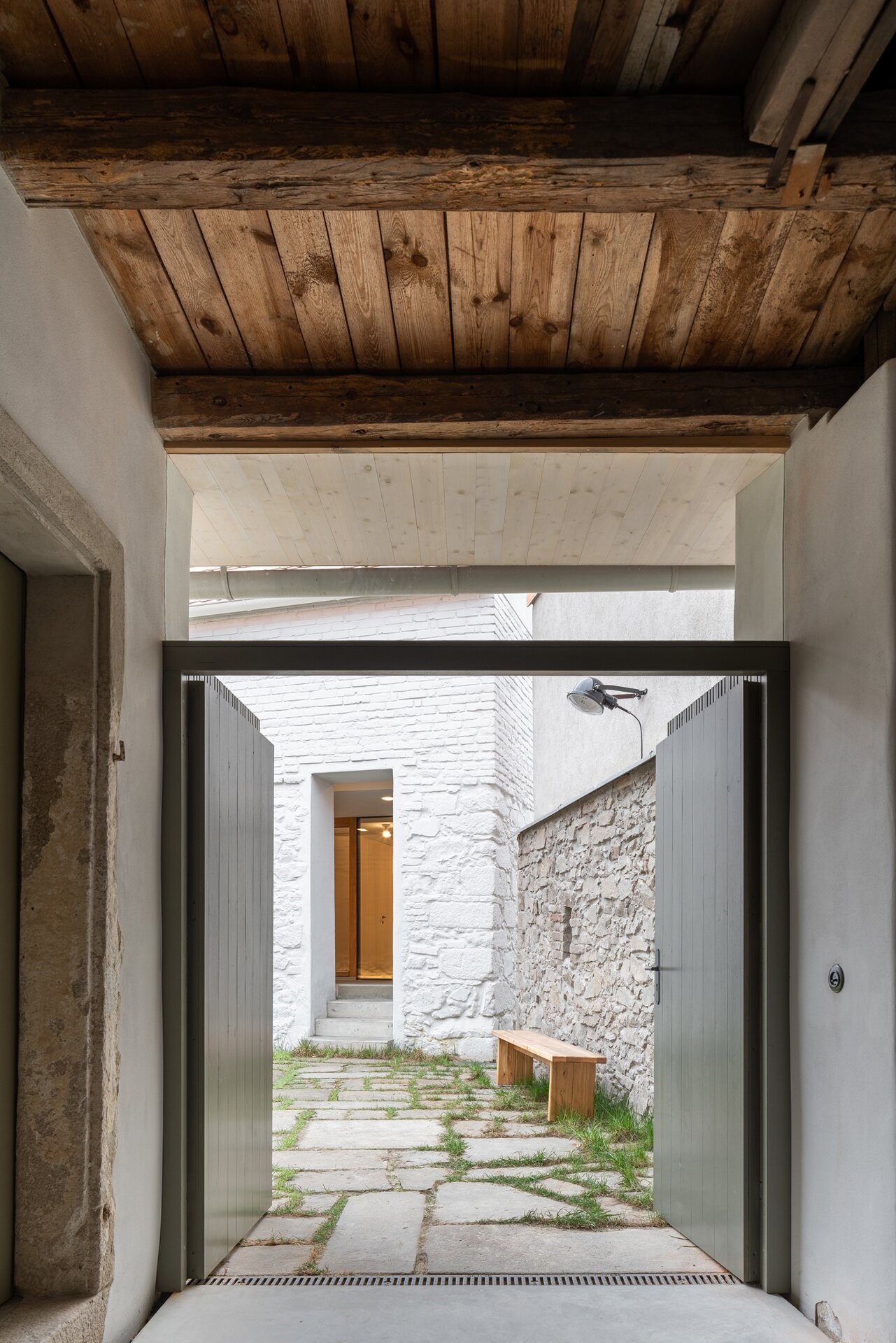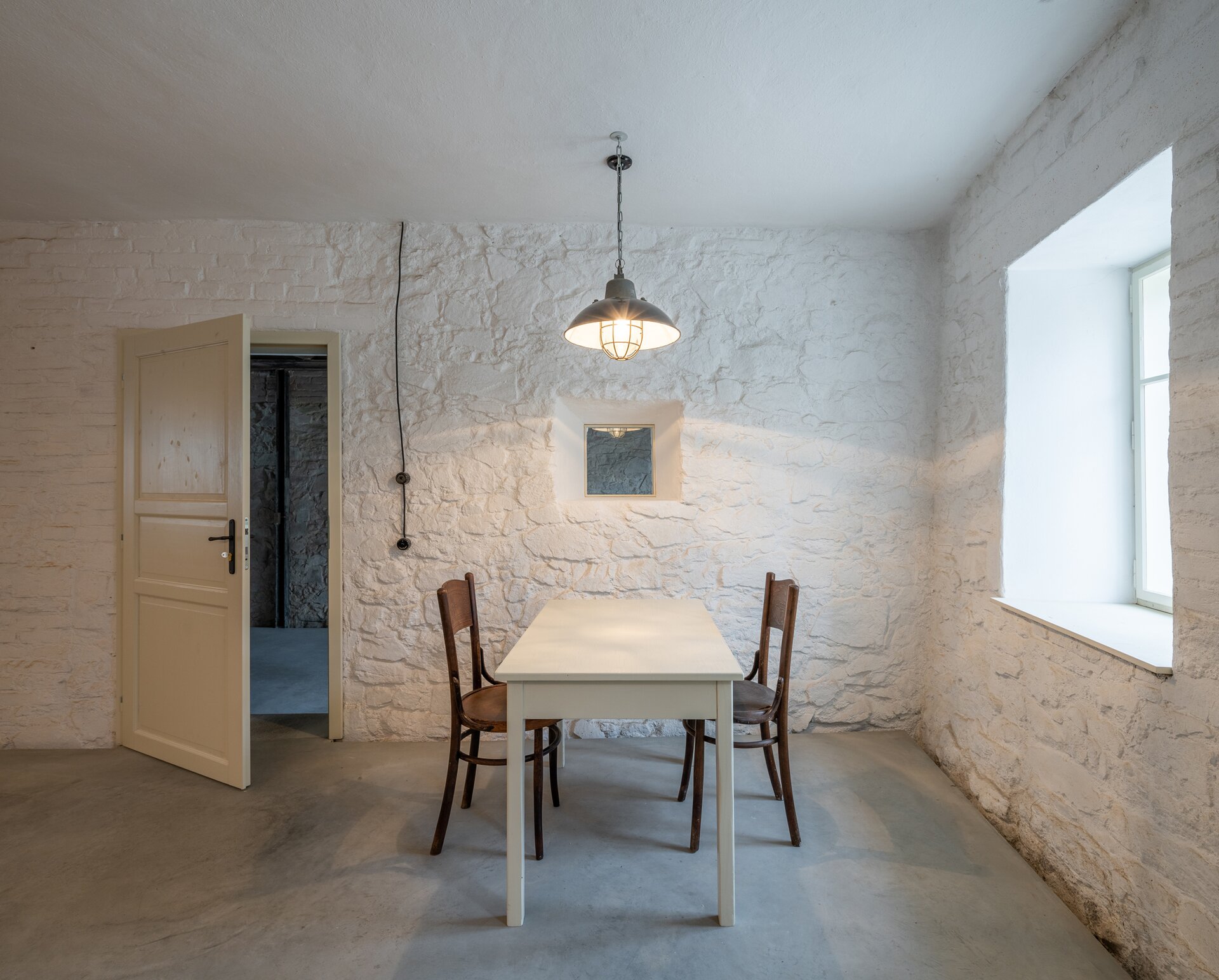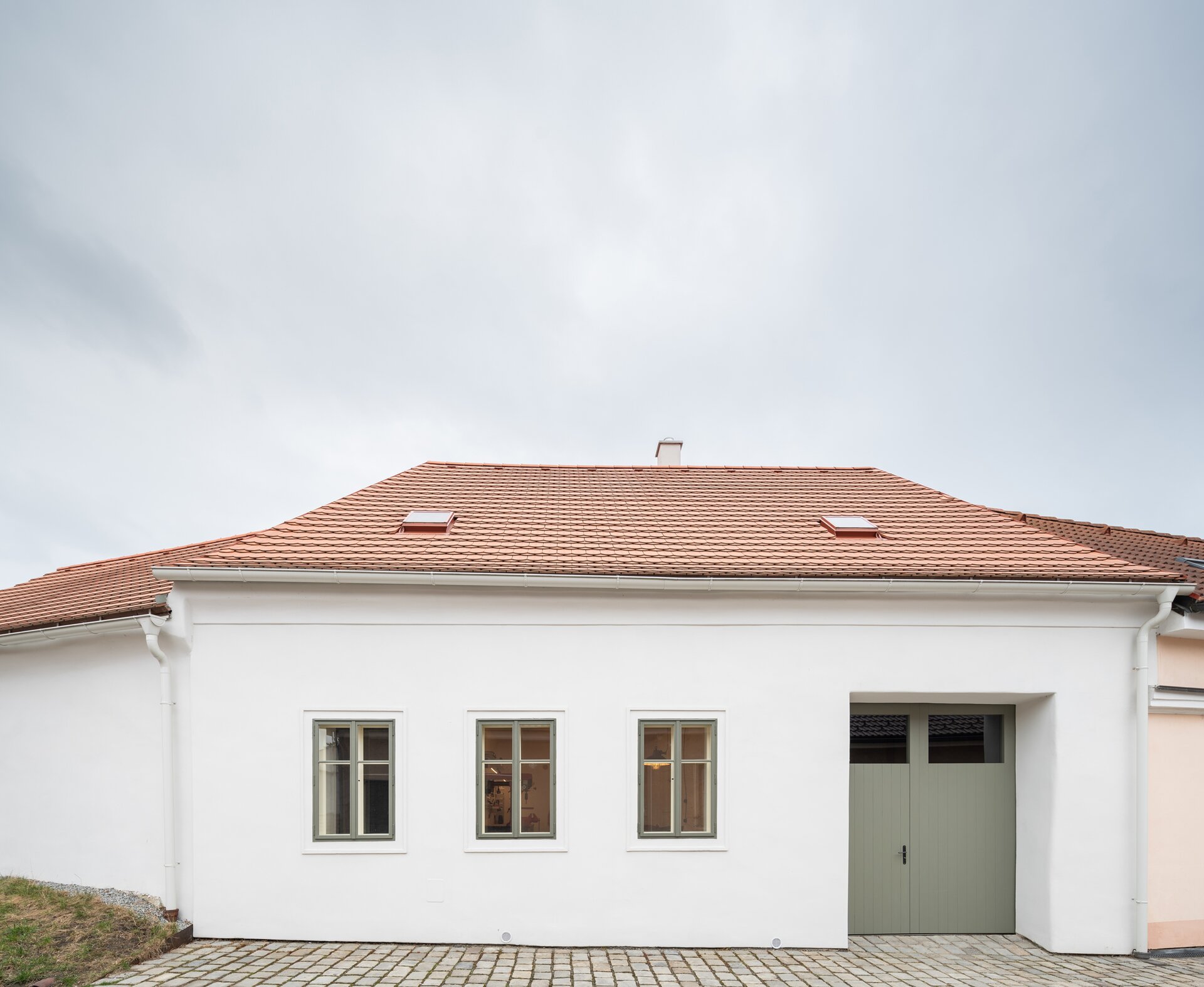| Author |
Barbora Weinzettlová, Jiří Weinzettl / atelier 111 architekti |
| Studio |
|
| Location |
Růžová 232, 374 01 Trhové Sviny |
| Investor |
manželé Weinzettlovi |
| Supplier |
Jiří Weinzettl |
| Date of completion / approval of the project |
March 2021 |
| Fotograf |
|
Our new home was created in a historical part of a small South Bohemian town, which, although neglected, possesses a rather strong atmosphere and potential. The place attracted us from the beginning for its distinctive character and great location. In the narrow sleepy streets, next to the grassy patch of the Kozina Square, we are hidden from the hustle and bustle of the surrounding traffic, while only a few steps separate us from the town center with shops, services and offices, schools, cinema, theater and railway station. We perceive the reconstructed house as an alternative to suburban villas which sometimes disproportionately cut out of our landscape. On a significantly smaller area, we are implementing a building program which includes a sufficiently large living room with an adjoining outdoor terrace, an attic with children's rooms and a playroom, a bedroom with its own bathroom, a garden with fruit trees, two garage spaces and a large workshop with a car lift.
The residential building is created by connecting two neighboring houses. One of them underwent a significant reconstruction at the turn of the millennium, the other one is in a state of disrepair. We are getting rid of the unsuitable modern elements, such as a large dormer with a balcony and plastic windows. Behind brick backing we discover original stone masonry and small historical fragments which hold value for us. We respect the basic shape, scale and materiality of the original masses. We adjust the internal disposition in an effort to make the building accessible from two sides – for pedestrians from the square and for cars from the opposite side. The large window in the gable of the courtyard facade is an answer to the unique view of the church tower. Views from the interior of the courtyards enrich the overall perception of the space. We intentionally leave the newly created openings minimalistic to create a contrast with the original traditionally divided windows.
Green building
Environmental certification
| Type and level of certificate |
-
|
Water management
| Is rainwater used for irrigation? |
|
| Is rainwater used for other purposes, e.g. toilet flushing ? |
|
| Does the building have a green roof / facade ? |
|
| Is reclaimed waste water used, e.g. from showers and sinks ? |
|
The quality of the indoor environment
| Is clean air supply automated ? |
|
| Is comfortable temperature during summer and winter automated? |
|
| Is natural lighting guaranteed in all living areas? |
|
| Is artificial lighting automated? |
|
| Is acoustic comfort, specifically reverberation time, guaranteed? |
|
| Does the layout solution include zoning and ergonomics elements? |
|
Principles of circular economics
| Does the project use recycled materials? |
|
| Does the project use recyclable materials? |
|
| Are materials with a documented Environmental Product Declaration (EPD) promoted in the project? |
|
| Are other sustainability certifications used for materials and elements? |
|
Energy efficiency
| Energy performance class of the building according to the Energy Performance Certificate of the building |
C
|
| Is efficient energy management (measurement and regular analysis of consumption data) considered? |
|
| Are renewable sources of energy used, e.g. solar system, photovoltaics? |
|
Interconnection with surroundings
| Does the project enable the easy use of public transport? |
|
| Does the project support the use of alternative modes of transport, e.g cycling, walking etc. ? |
|
| Is there access to recreational natural areas, e.g. parks, in the immediate vicinity of the building? |
|
